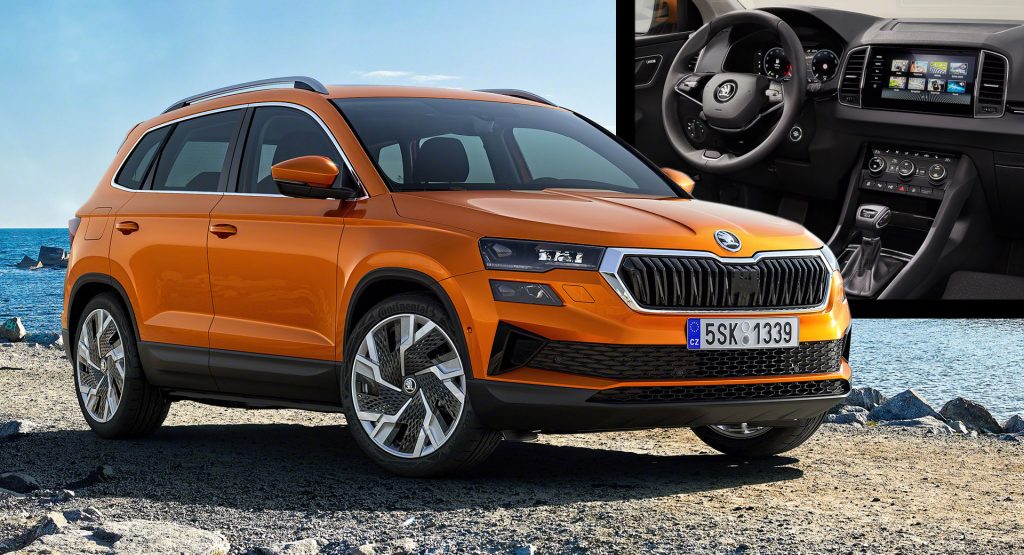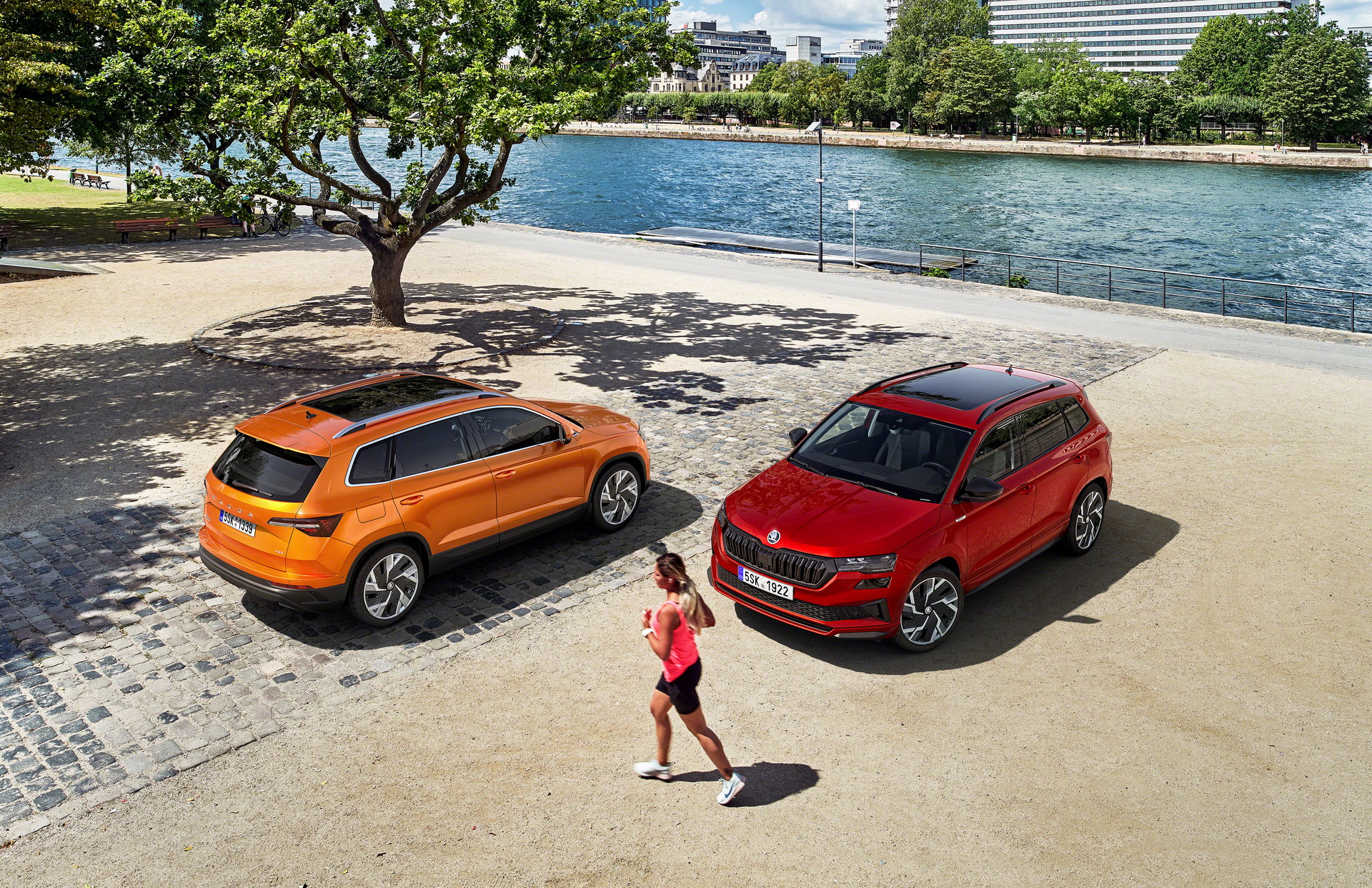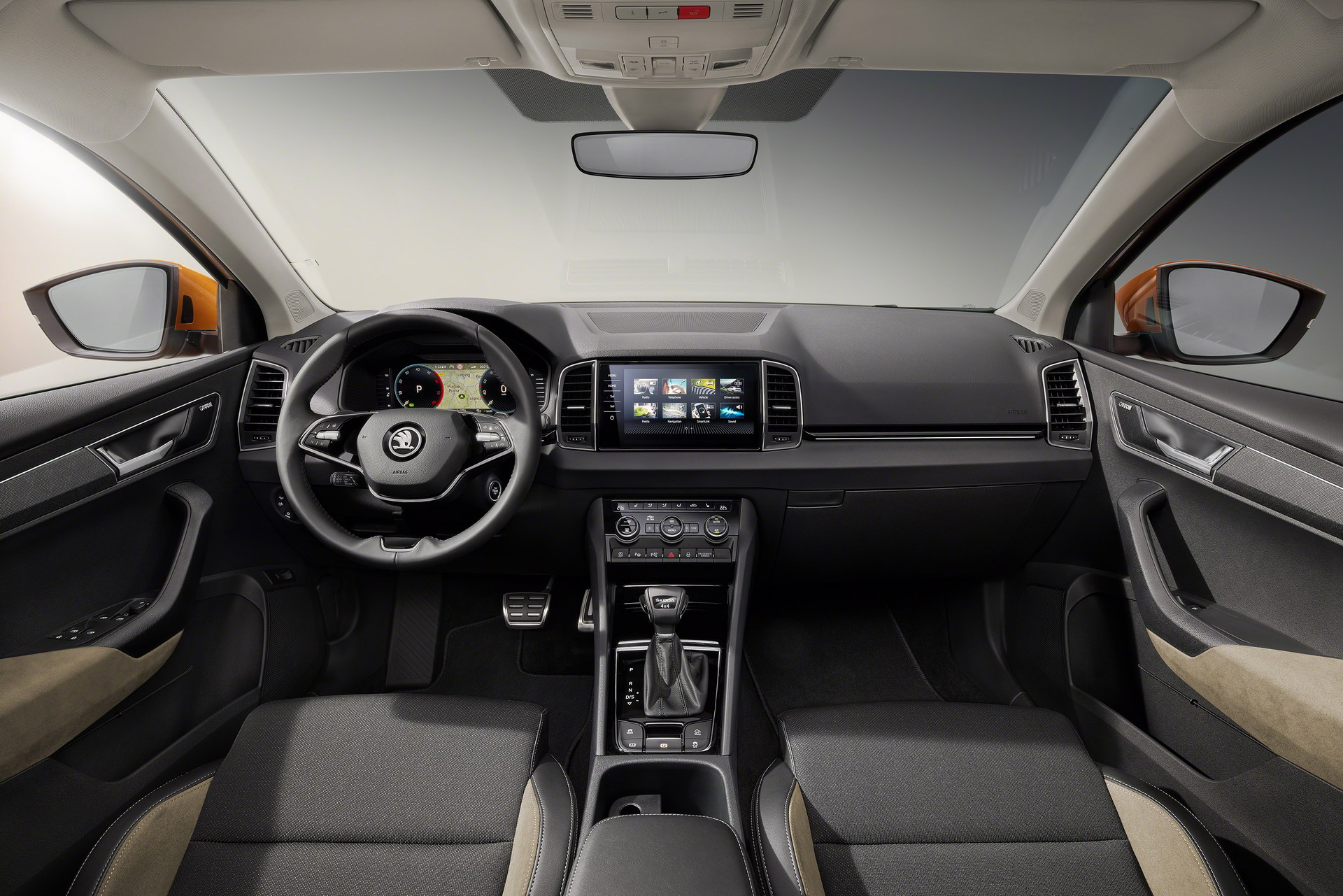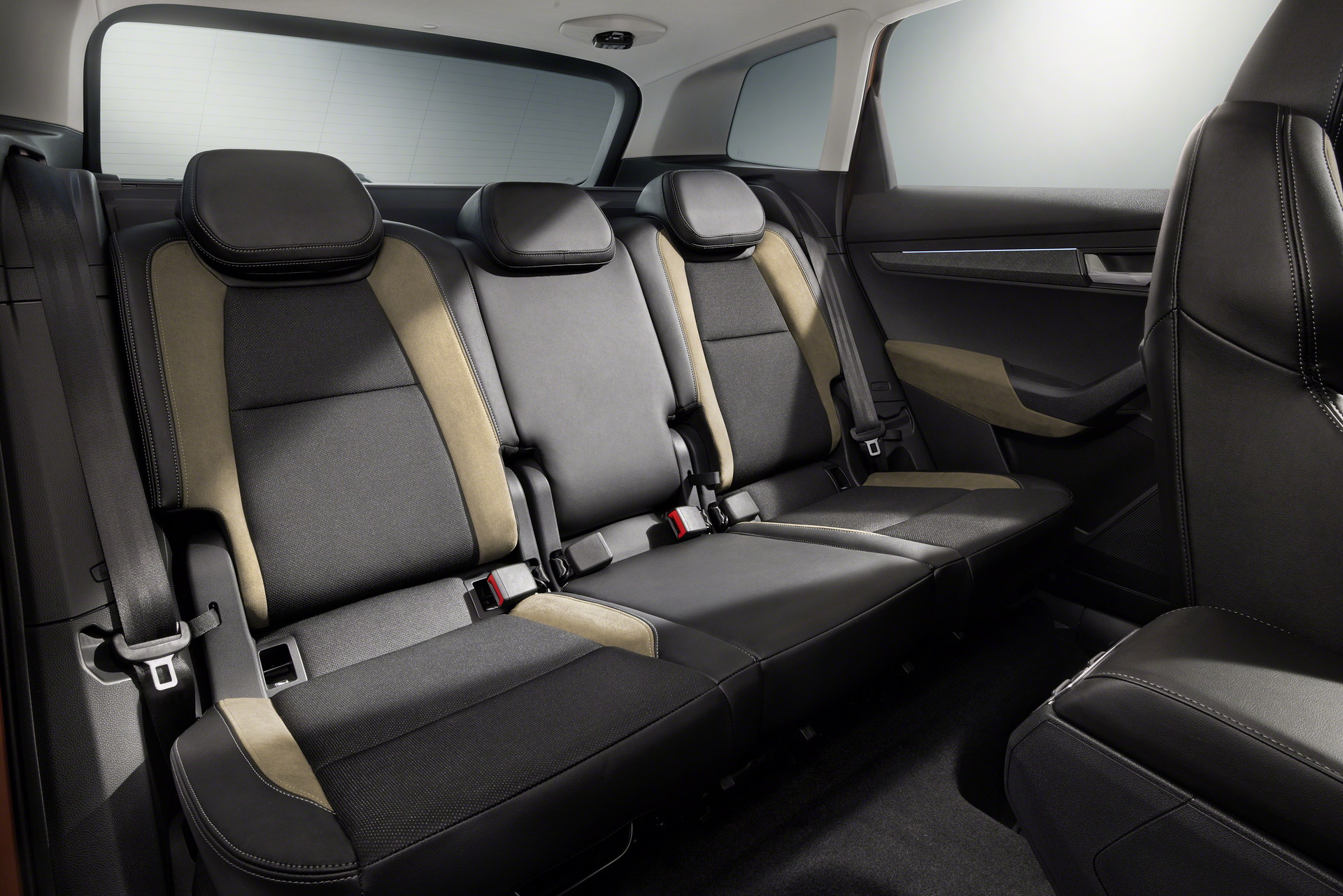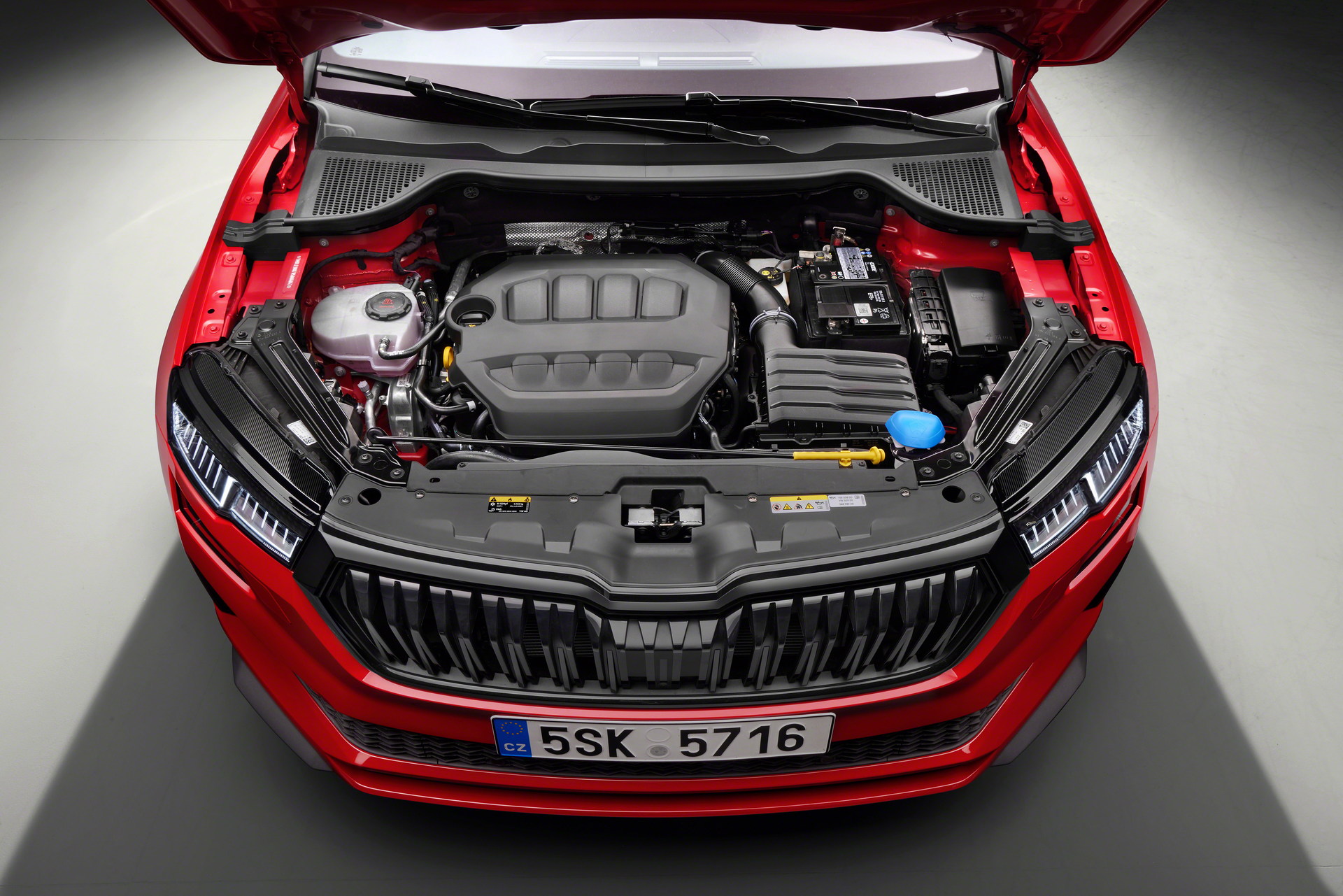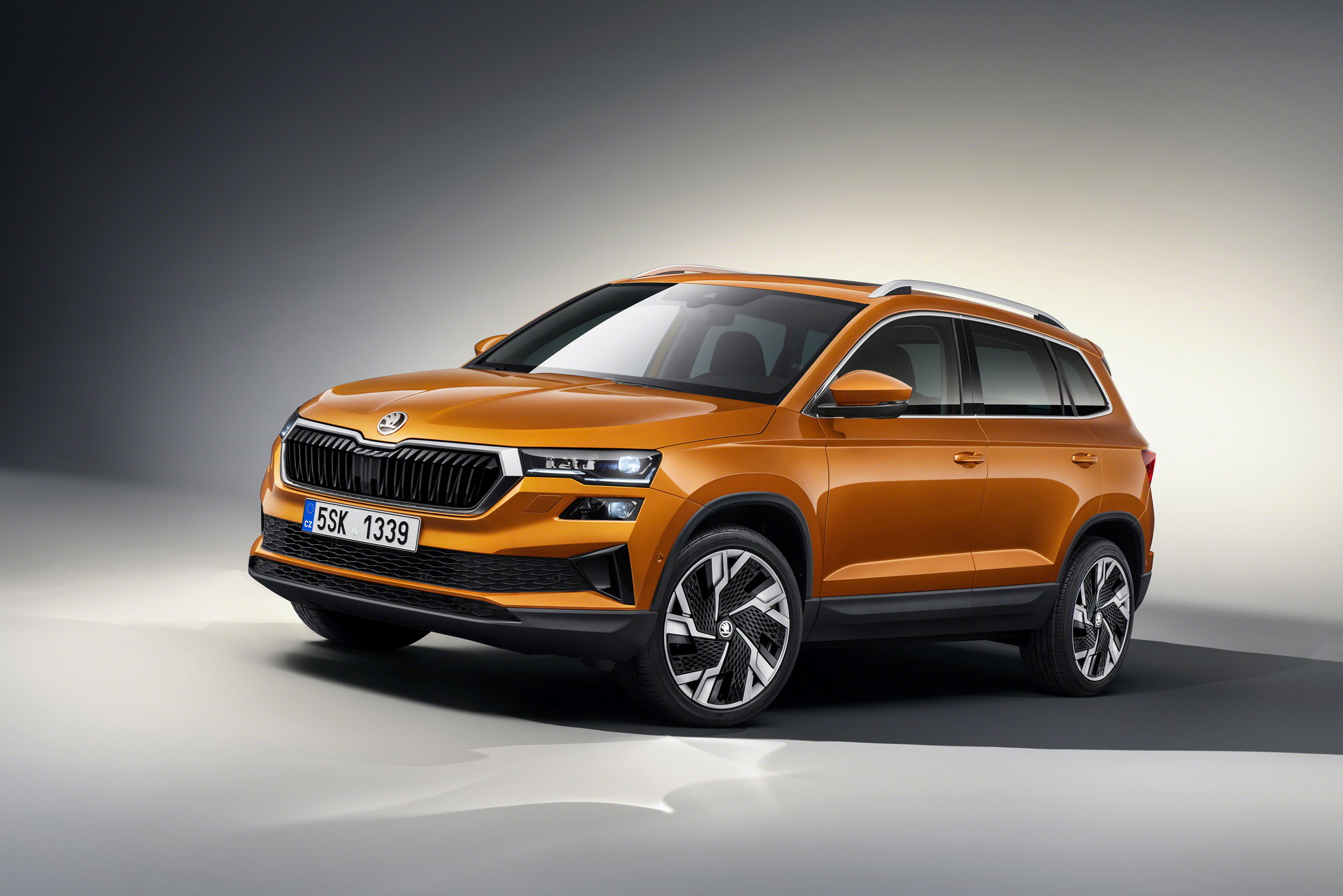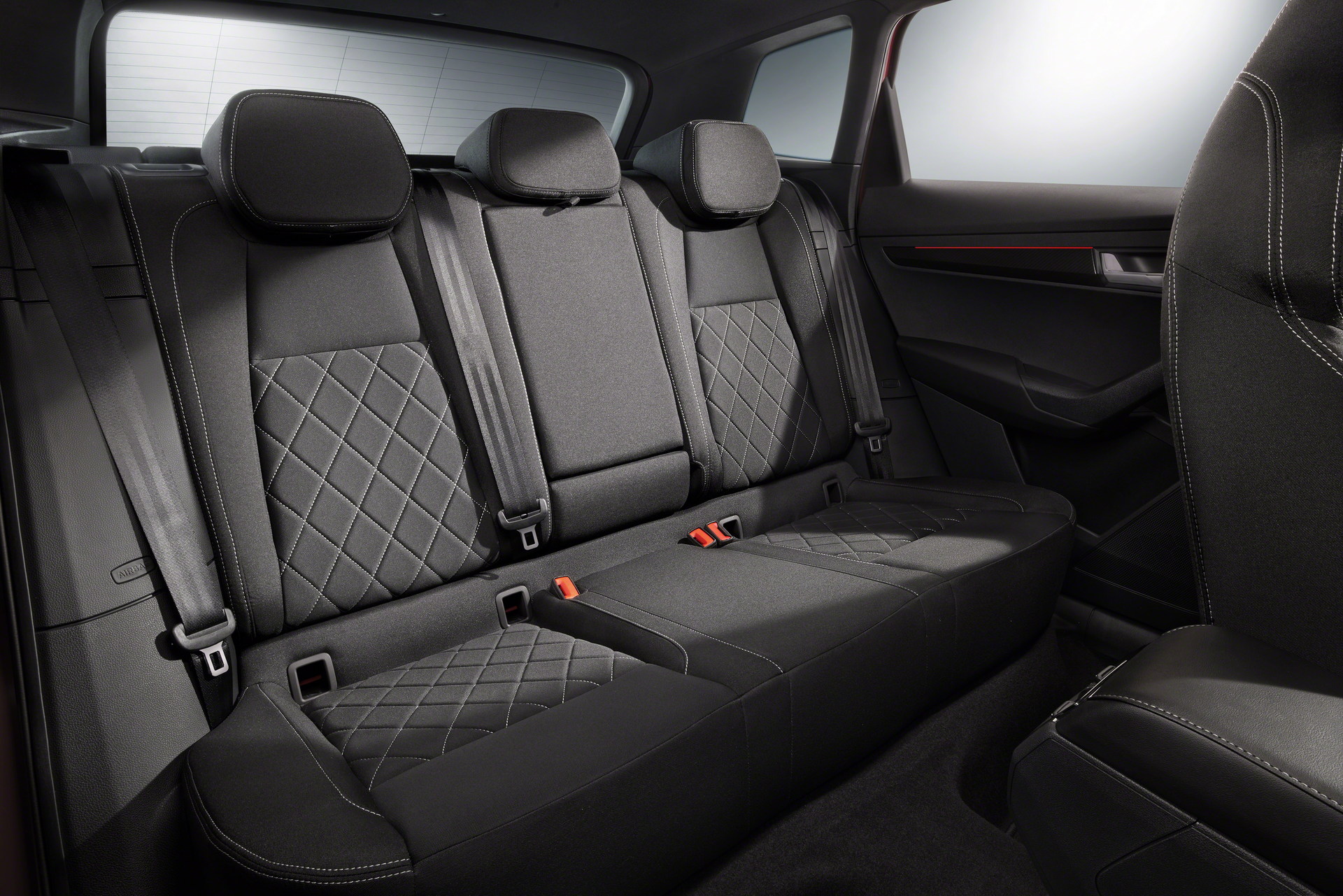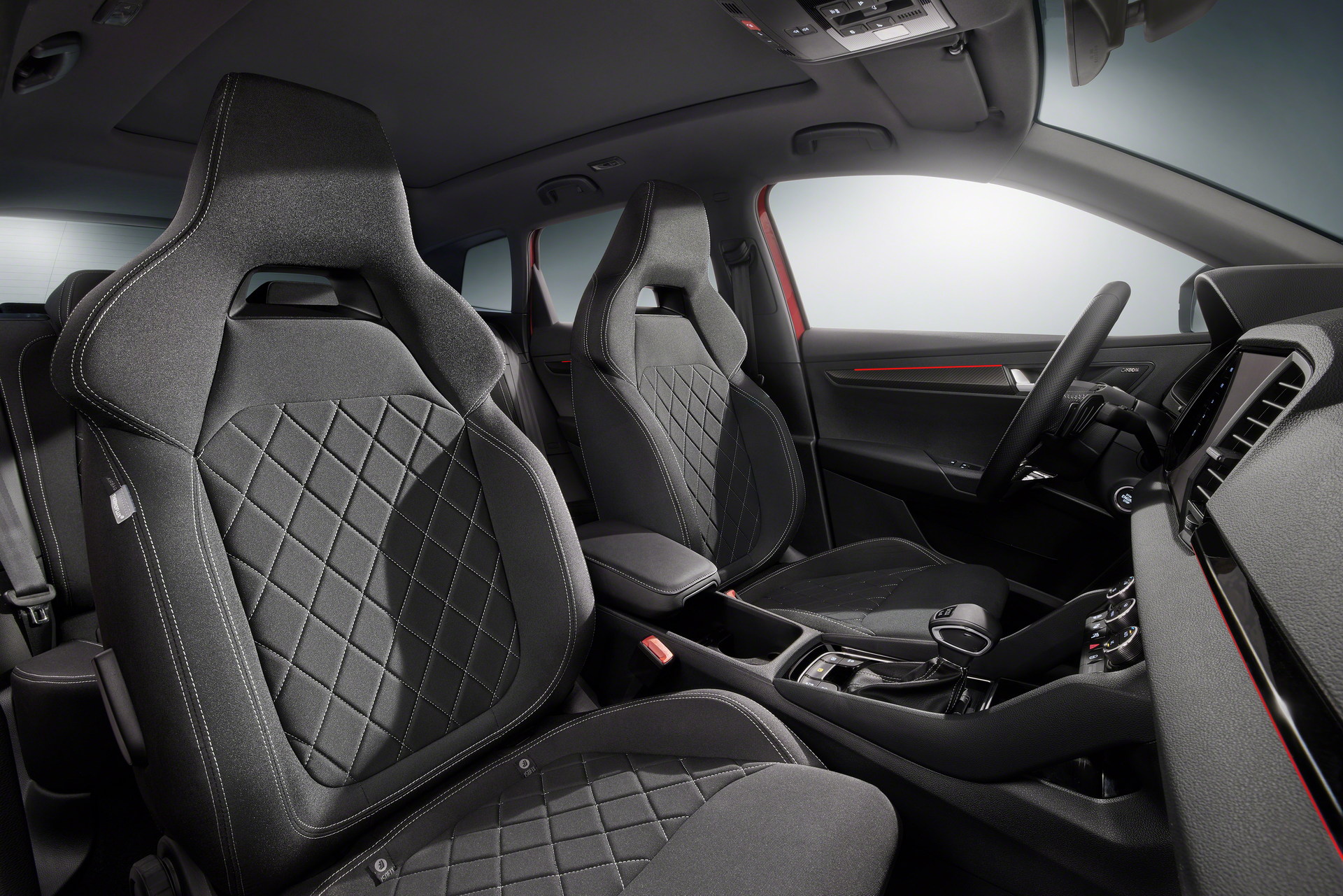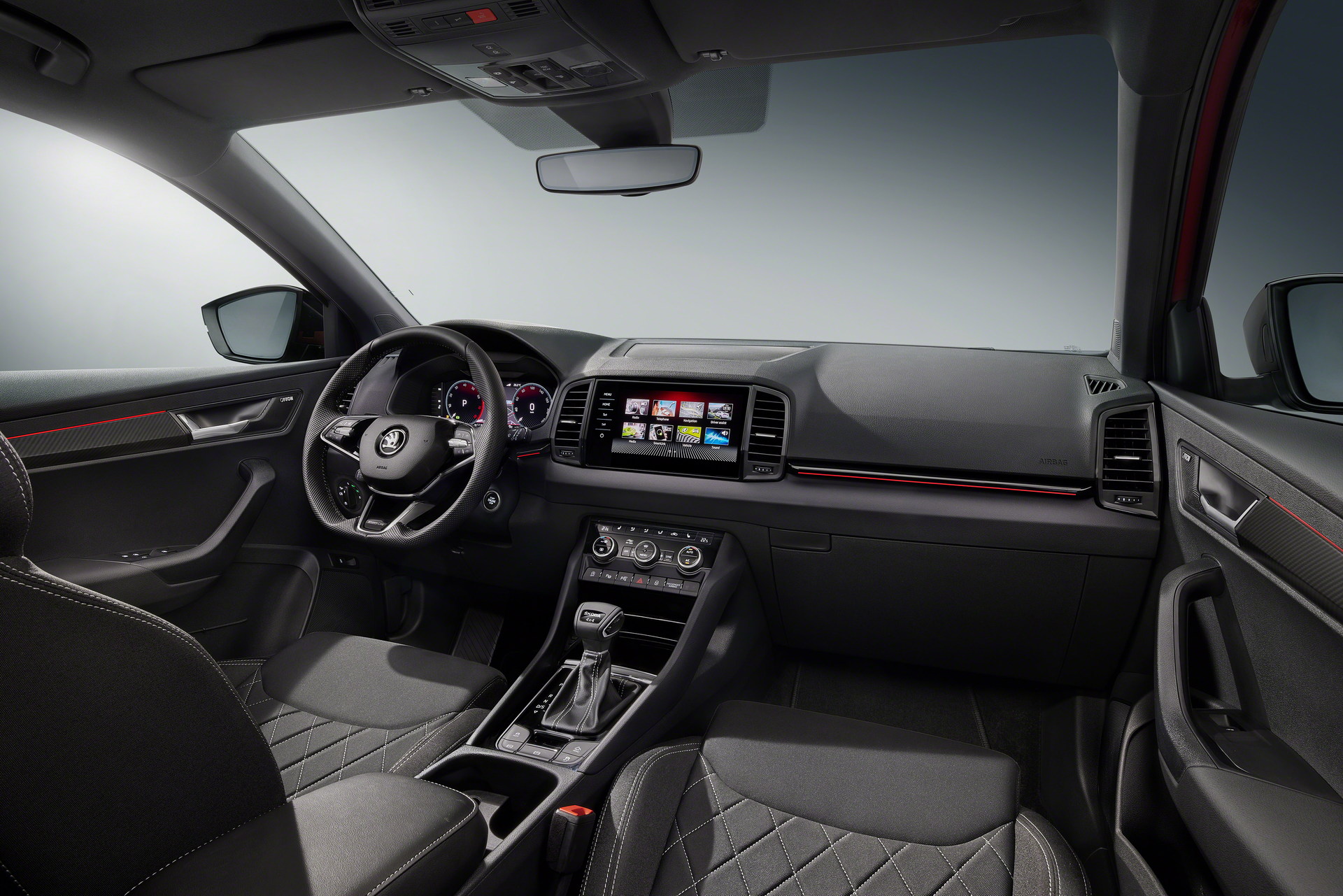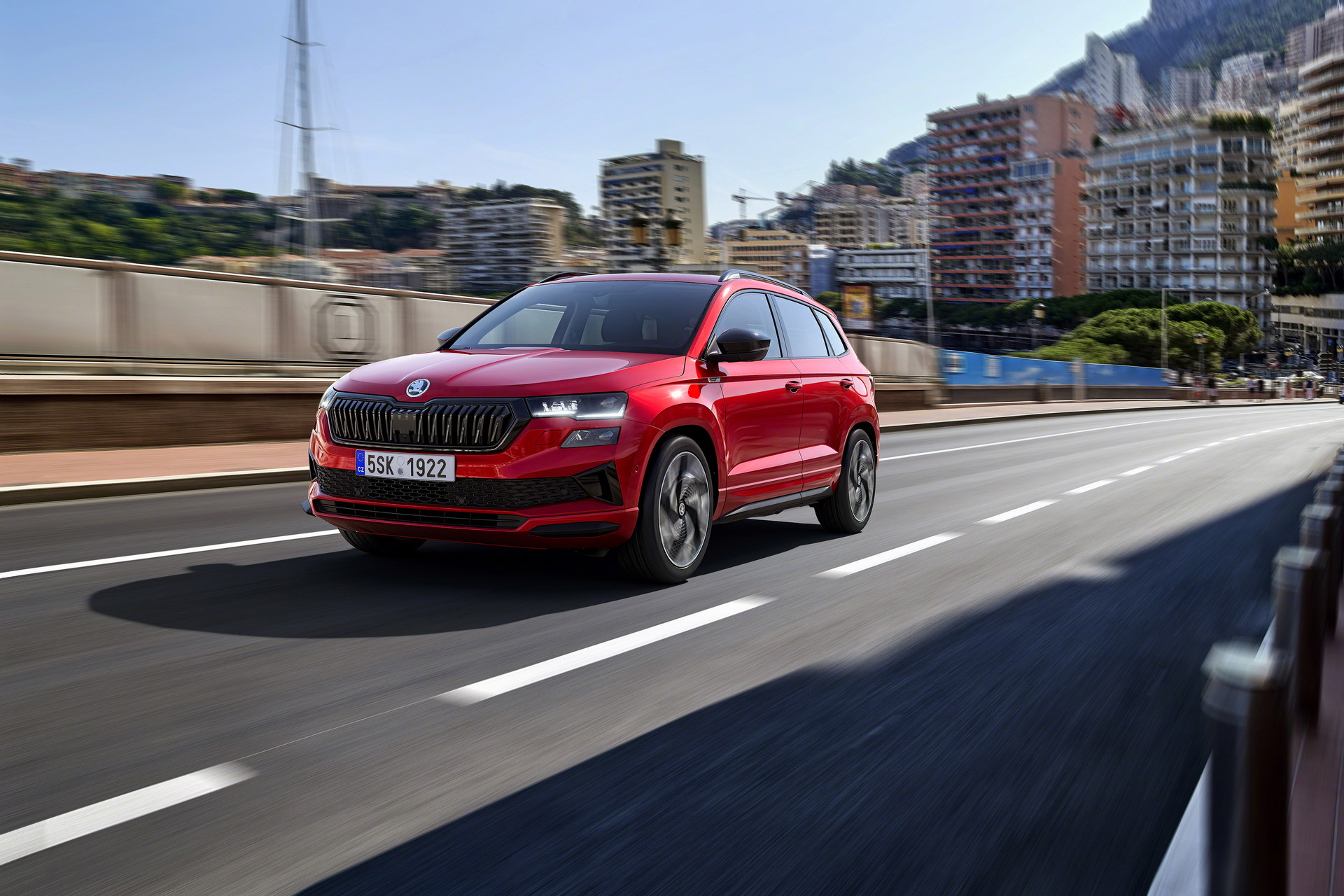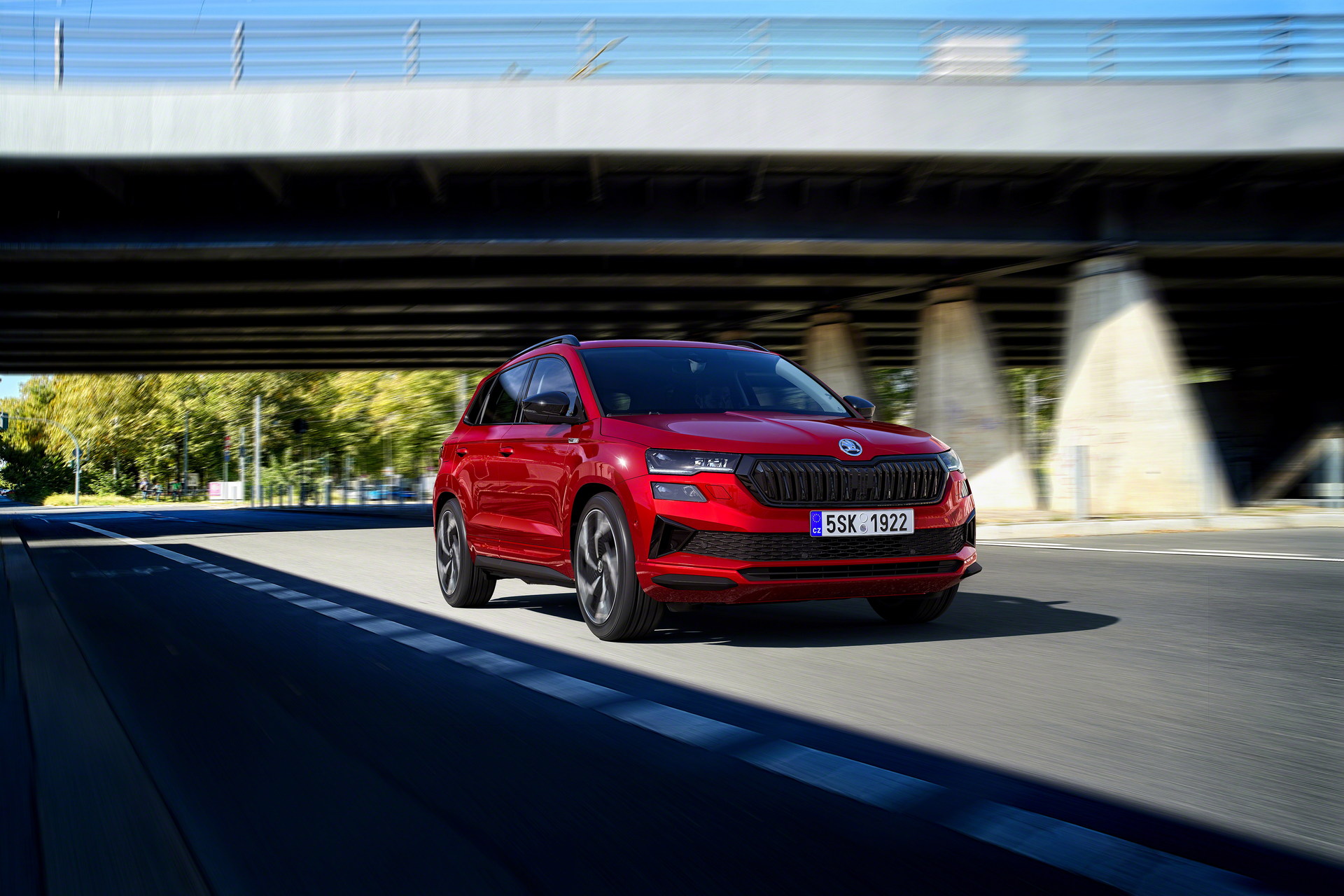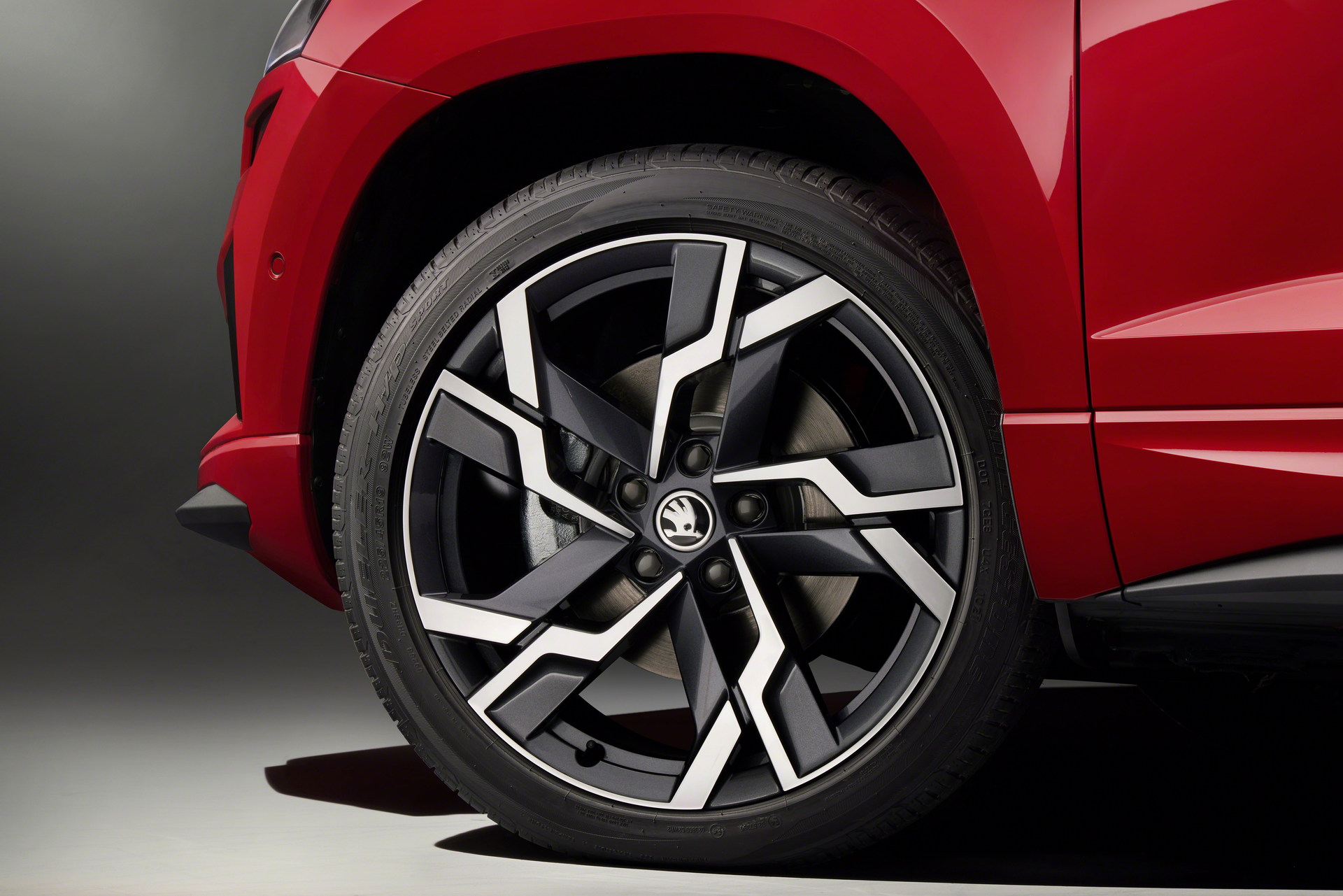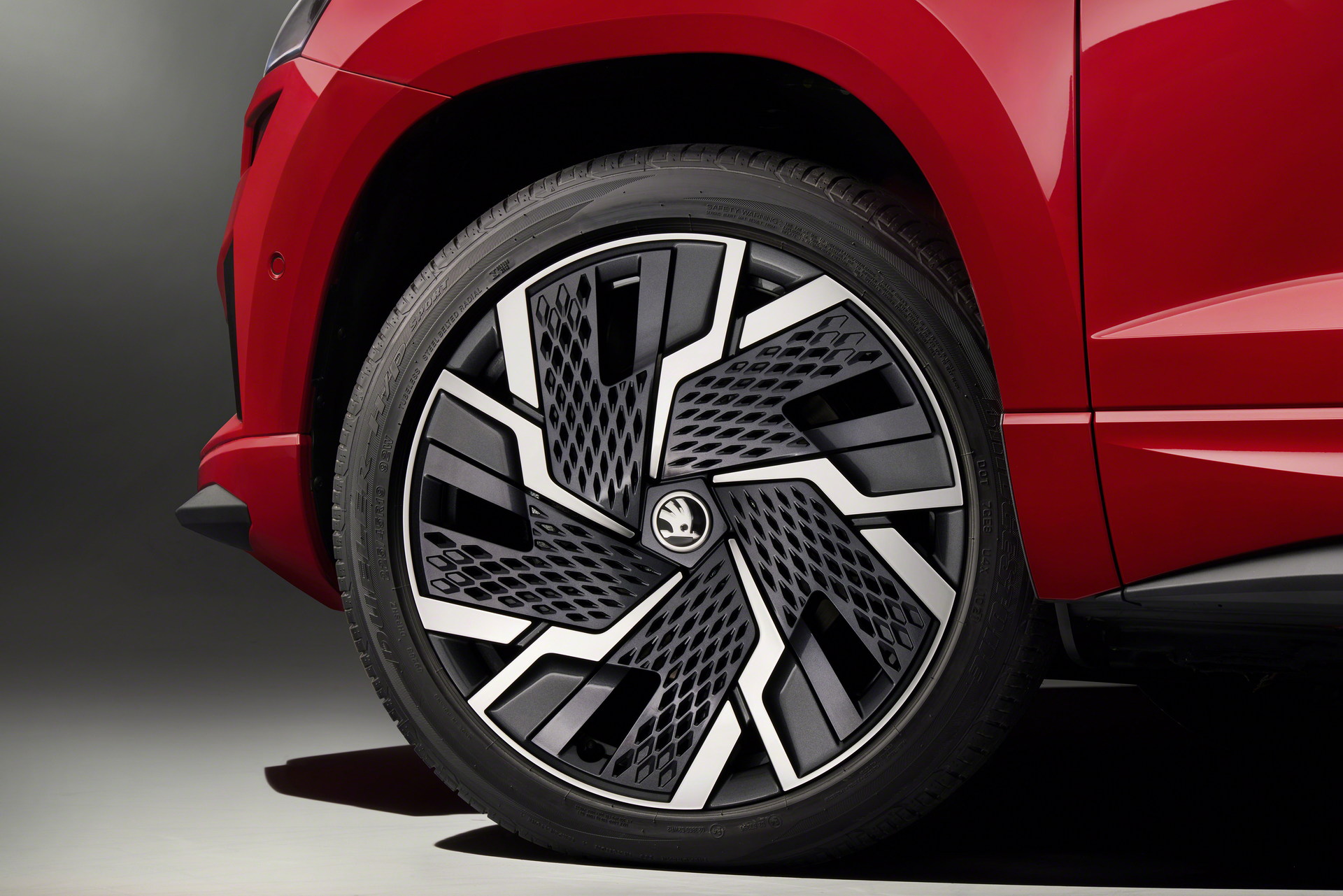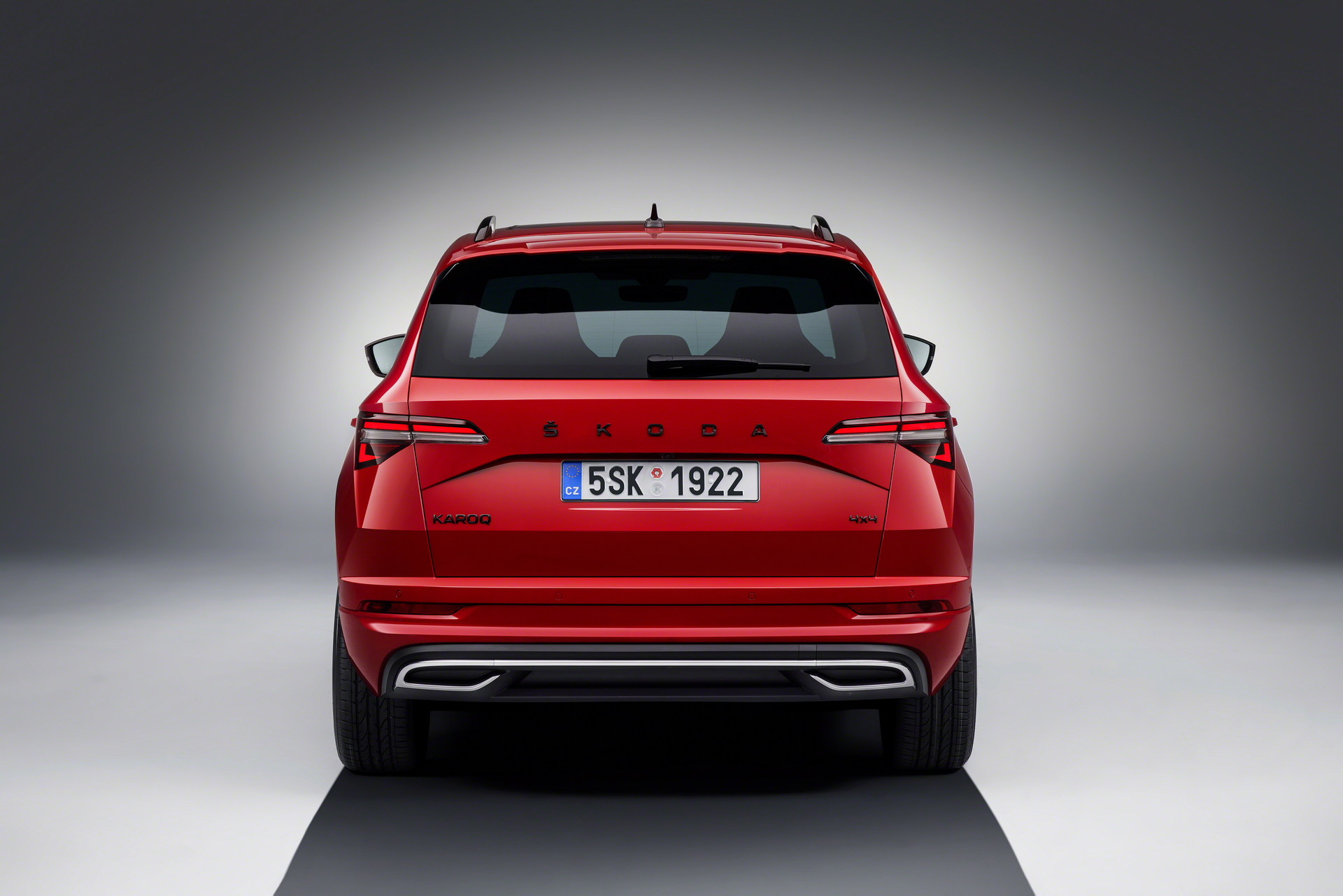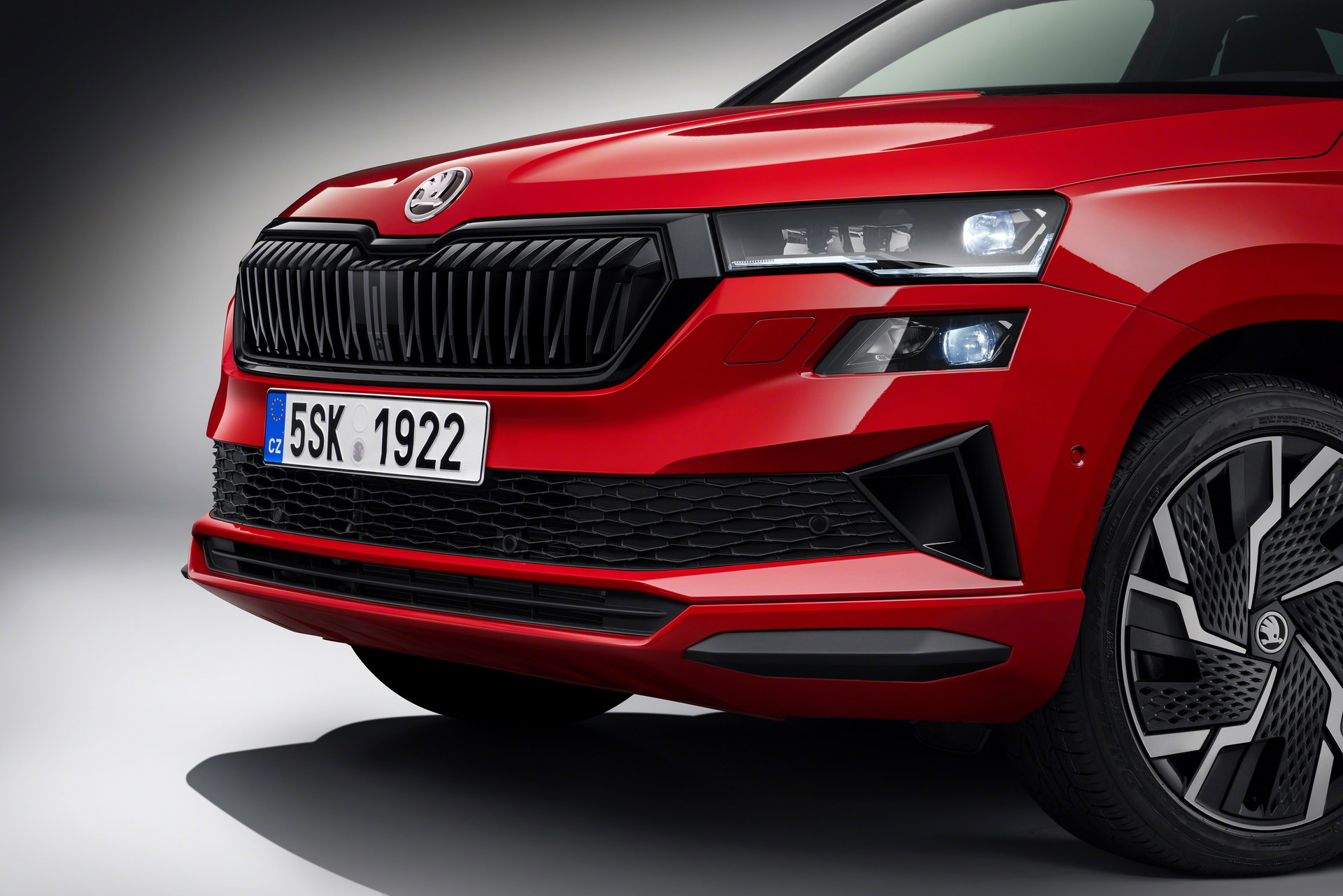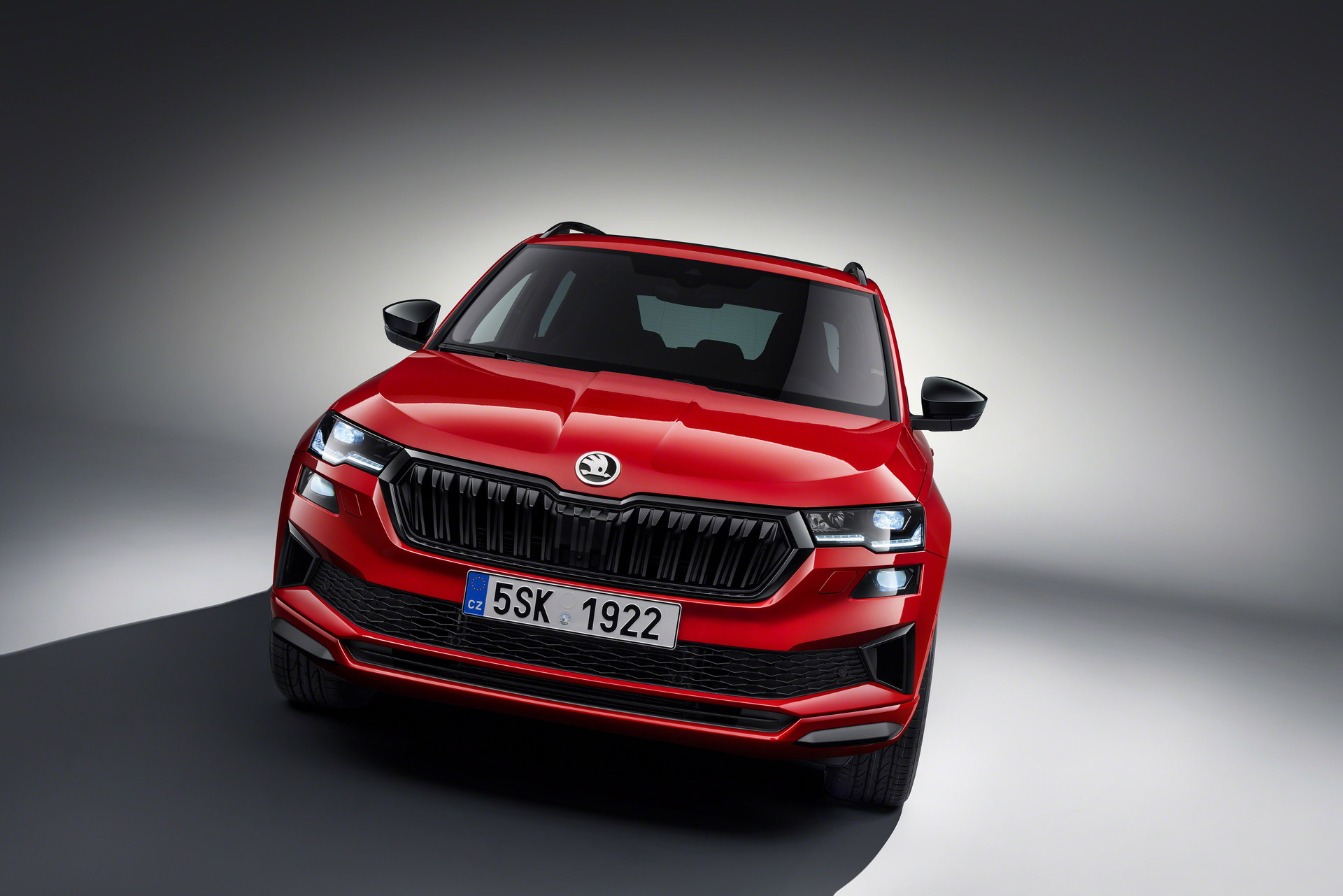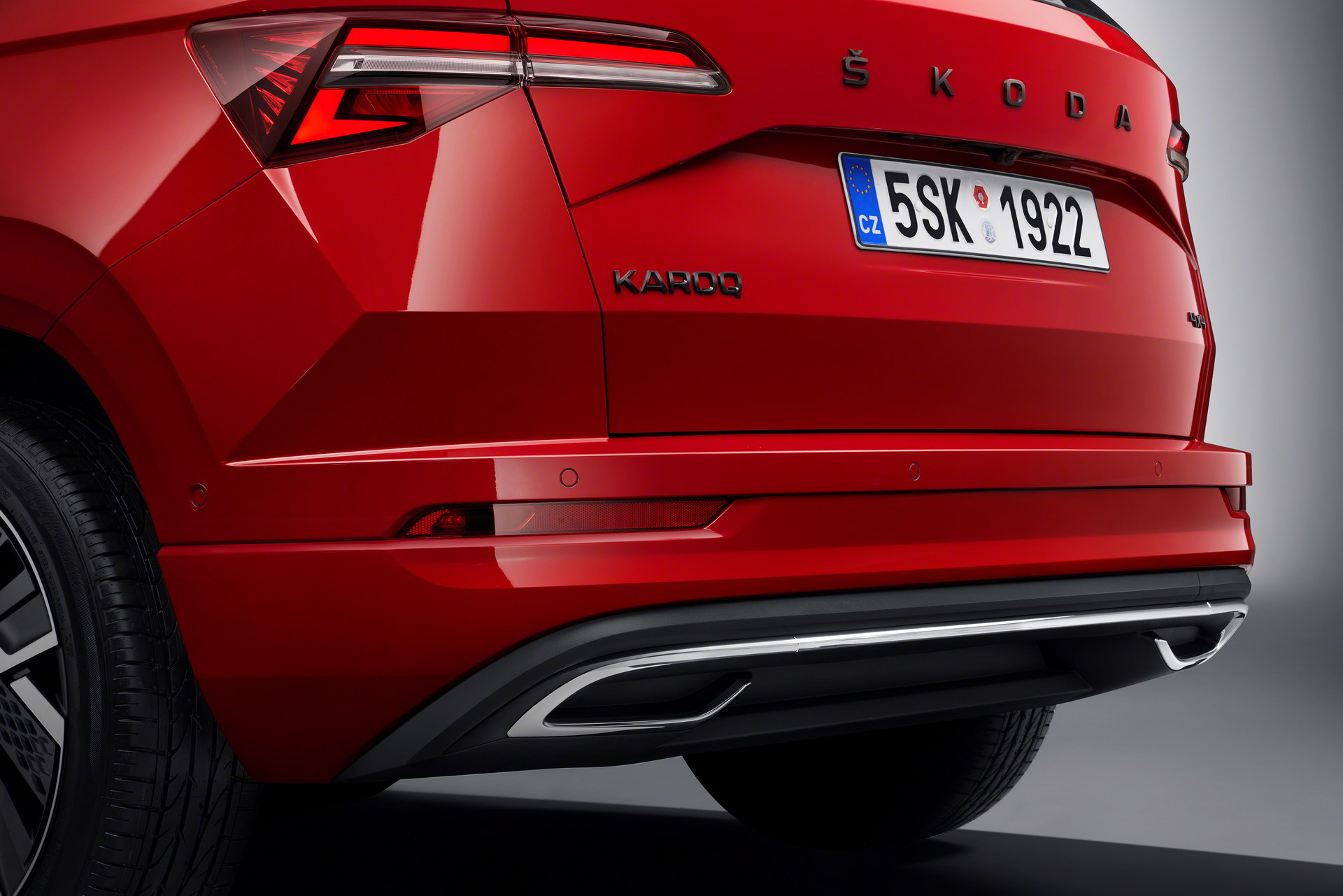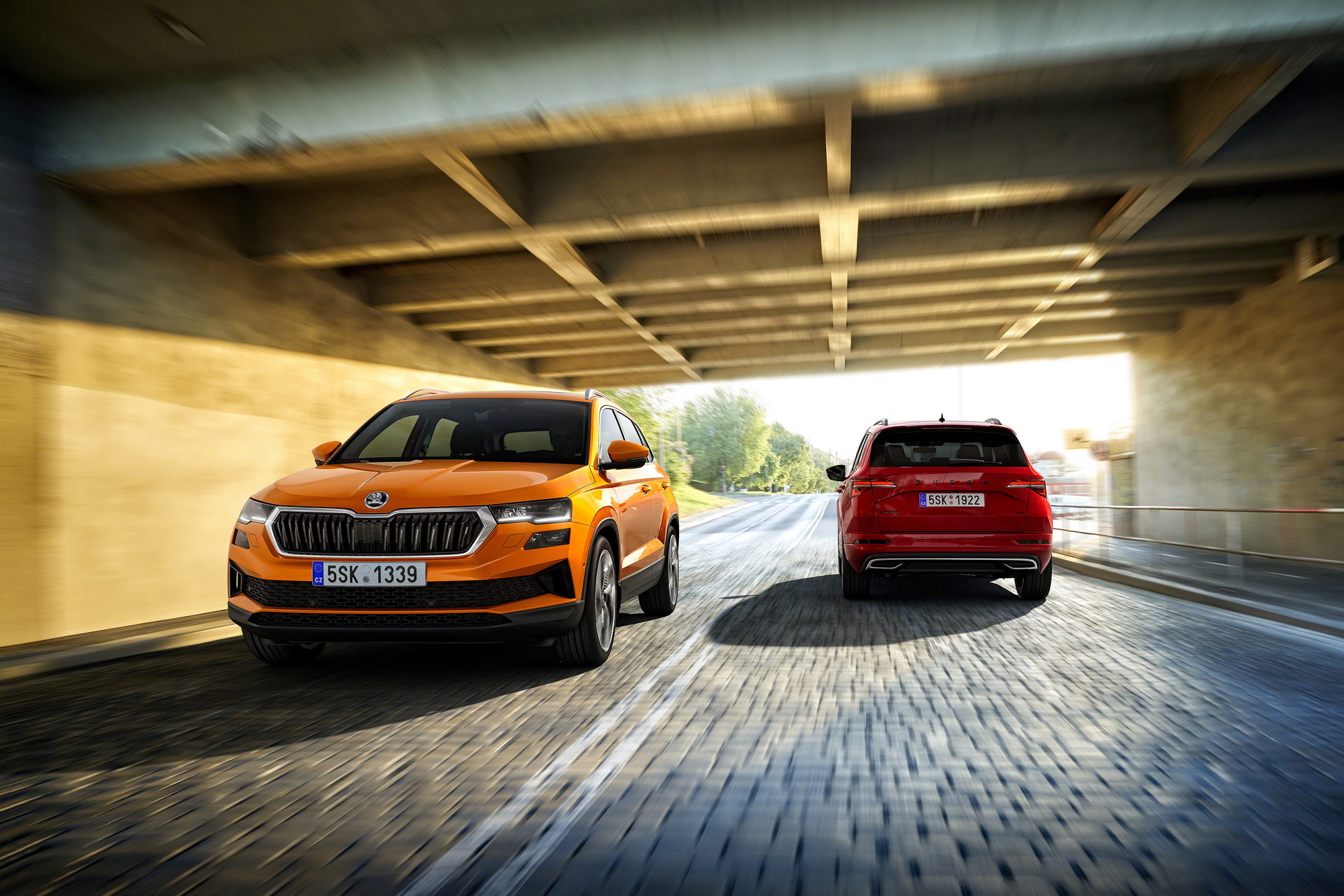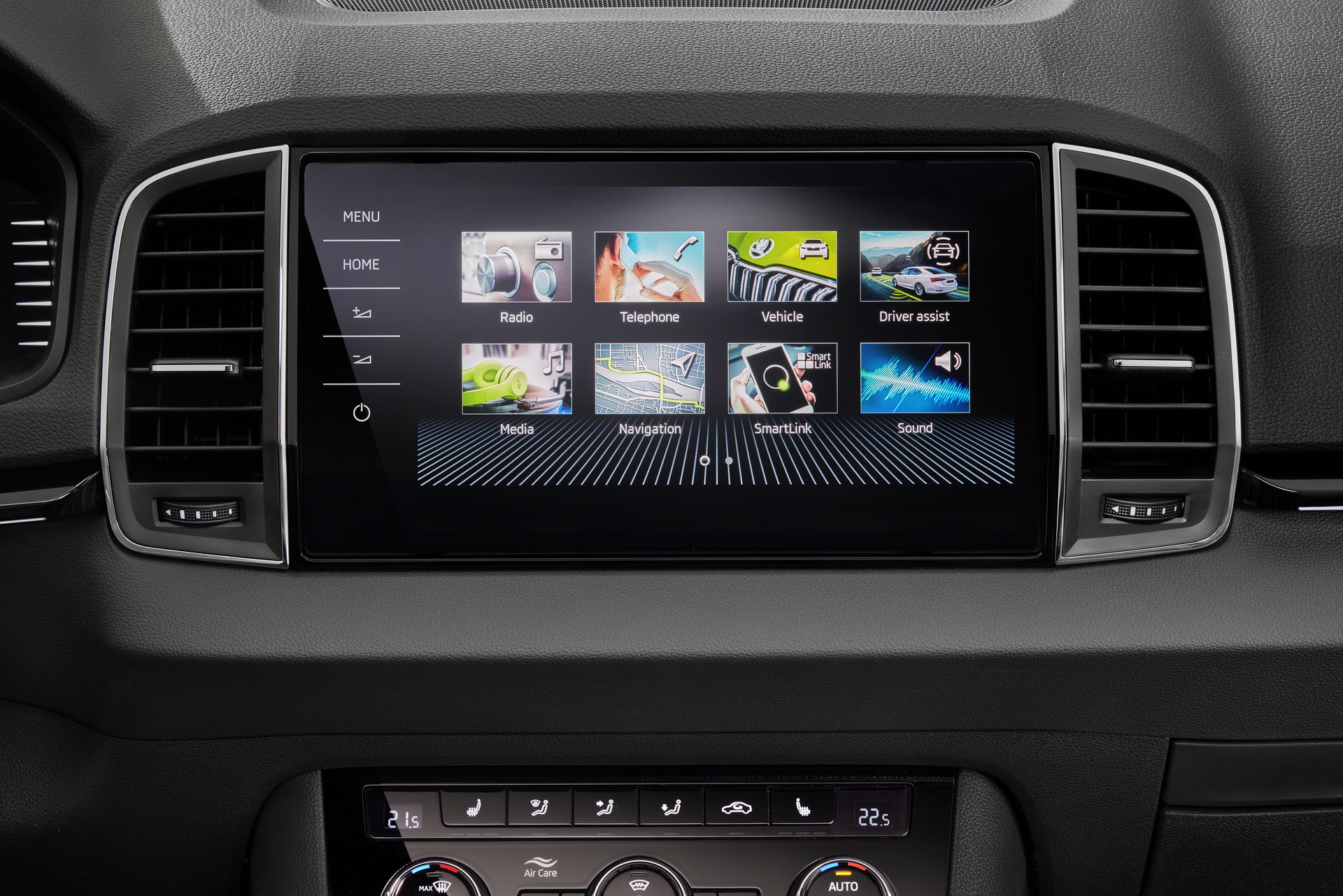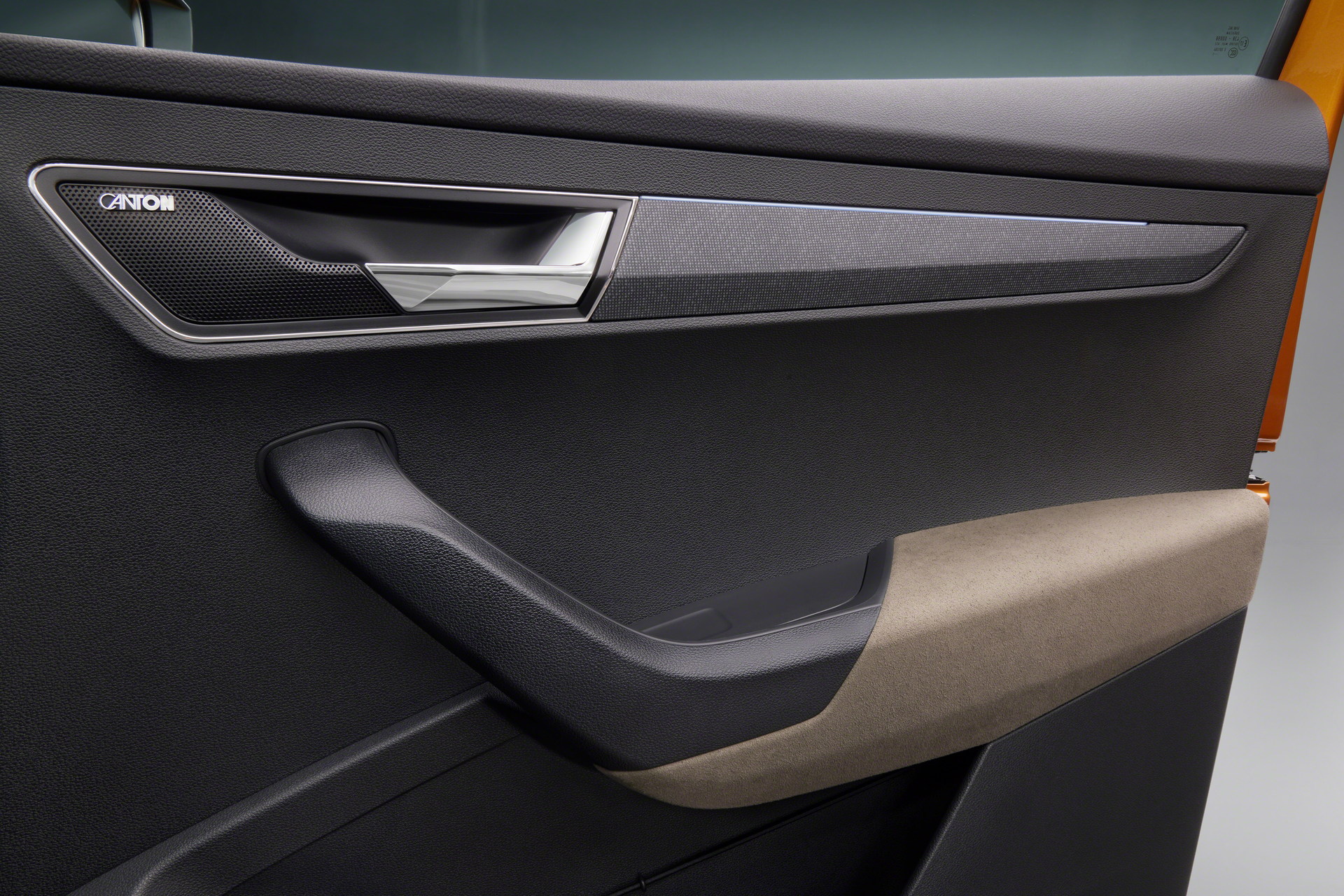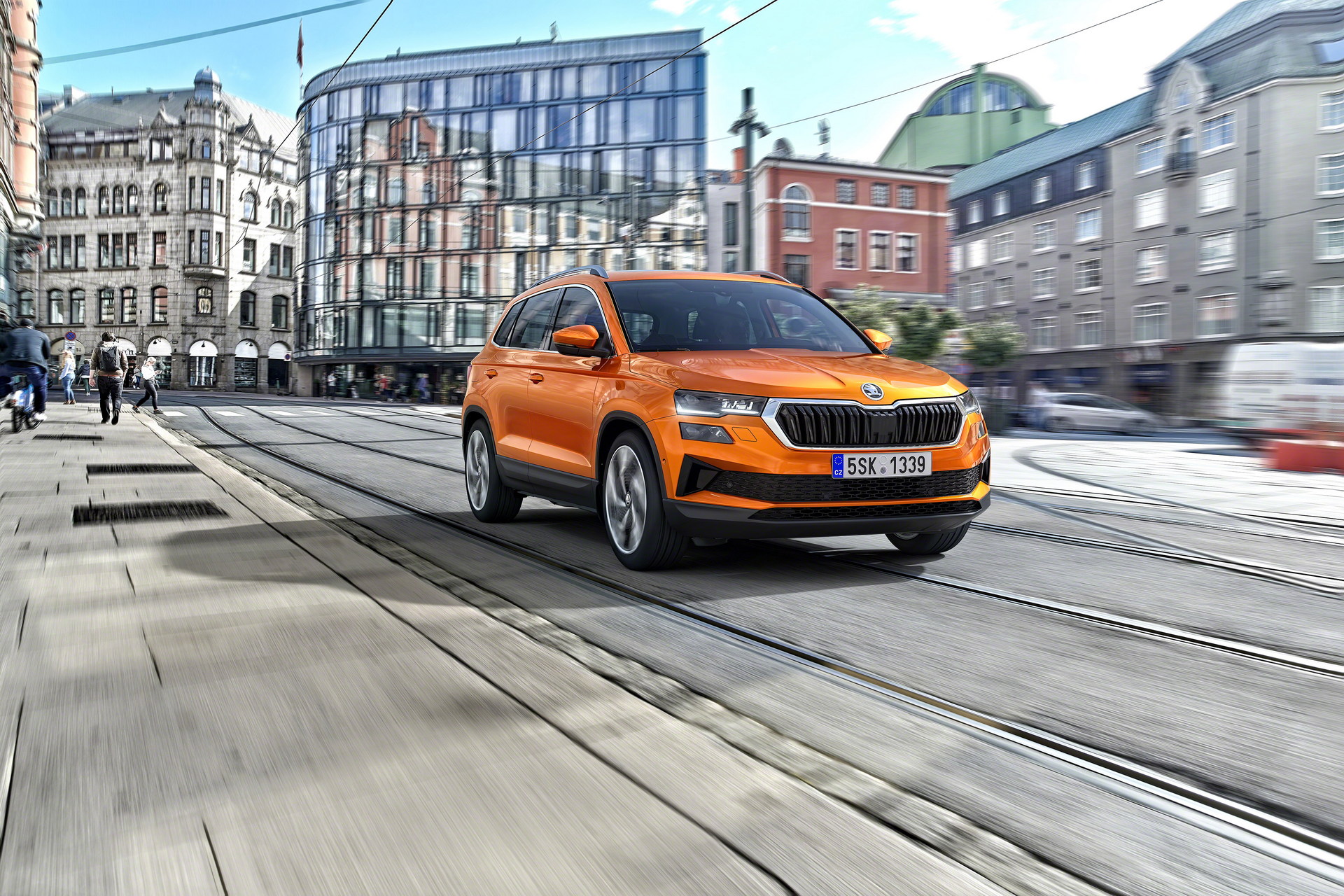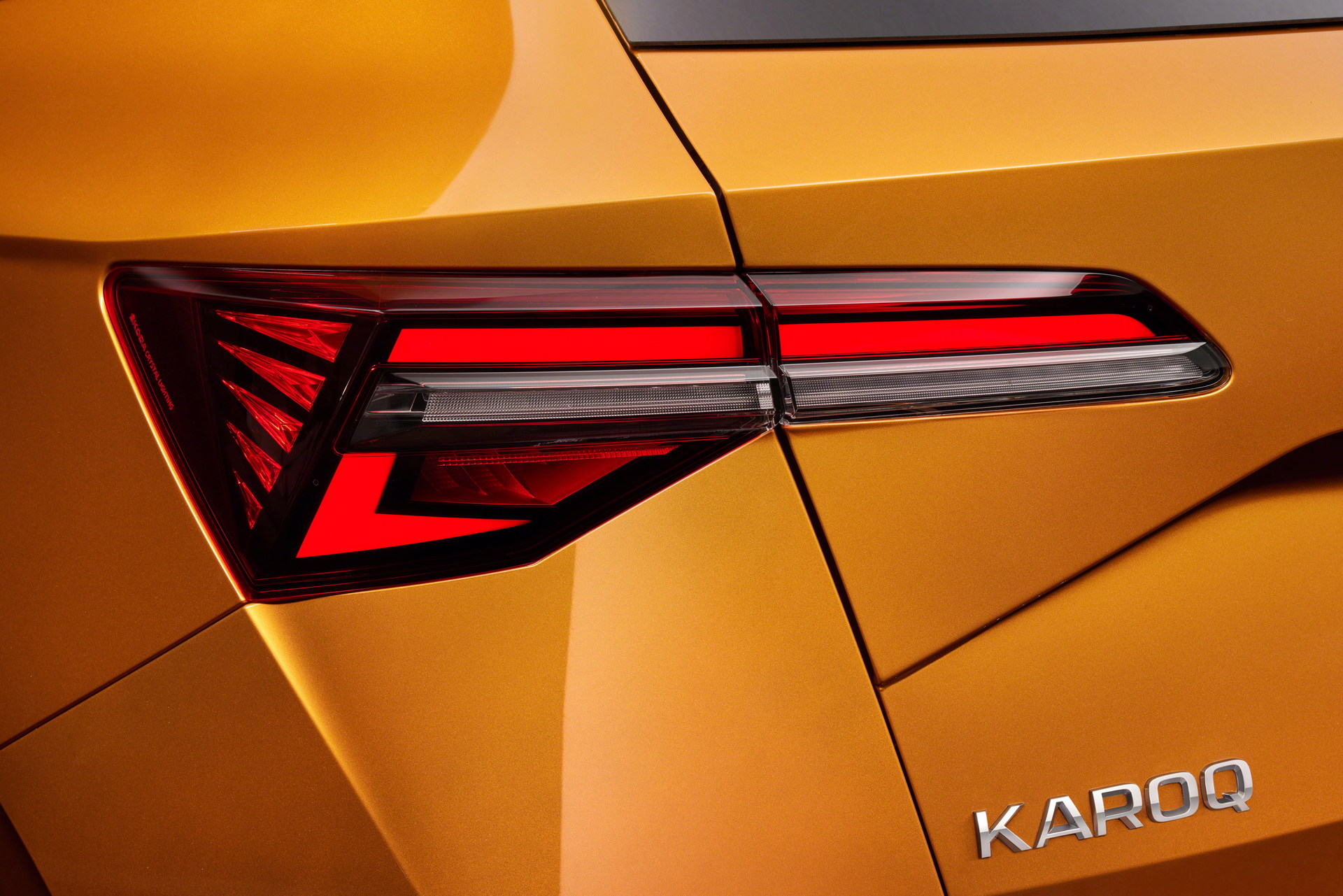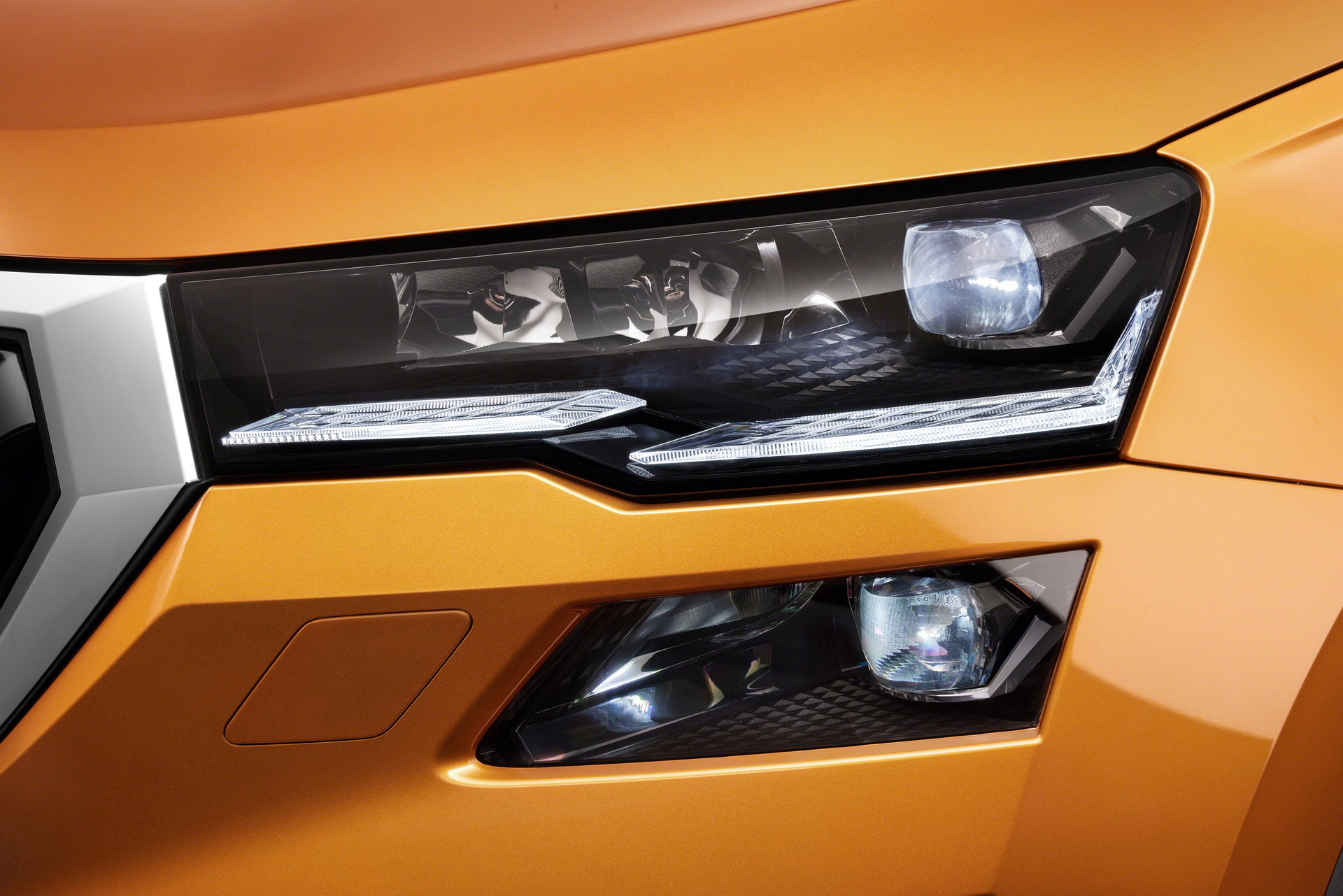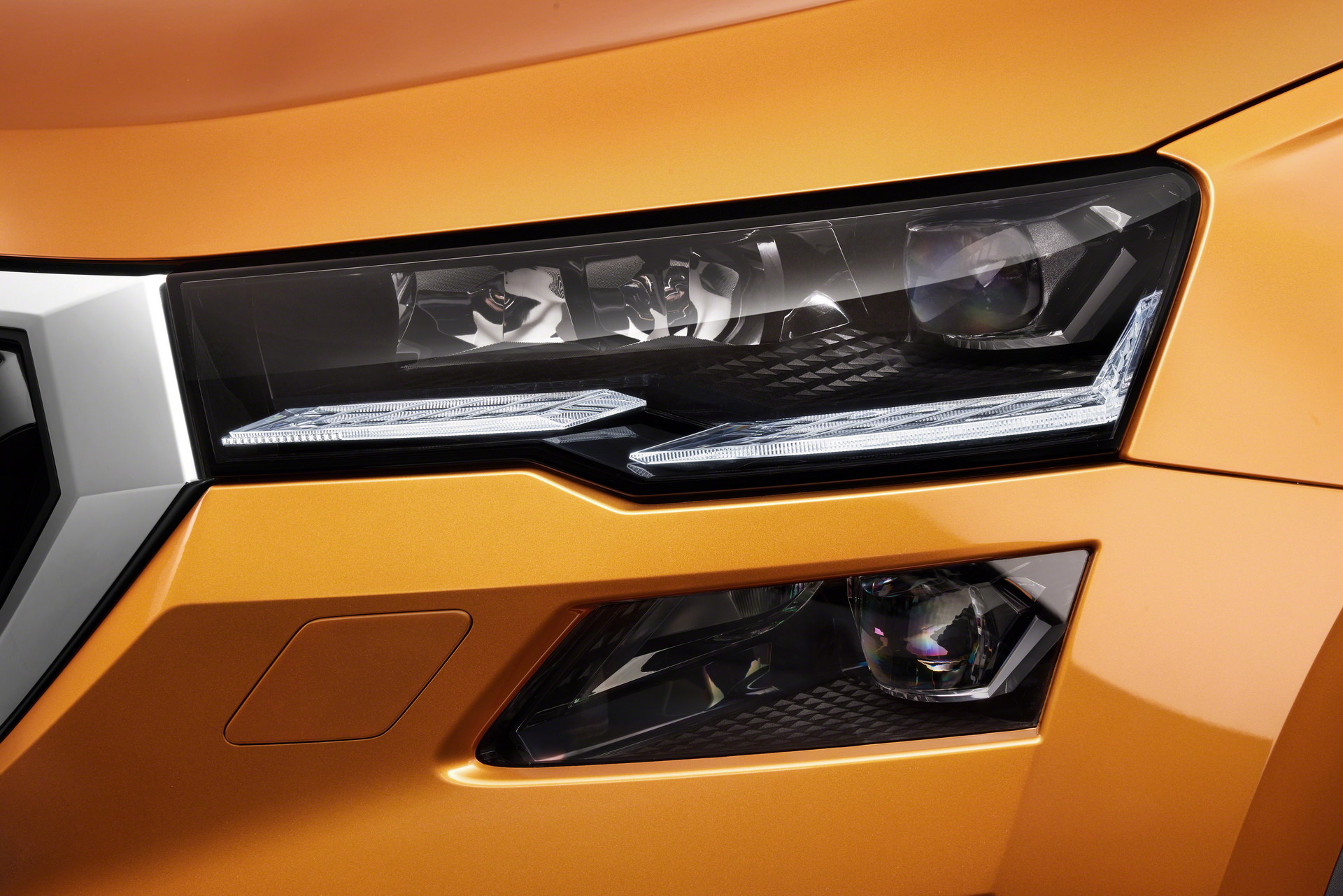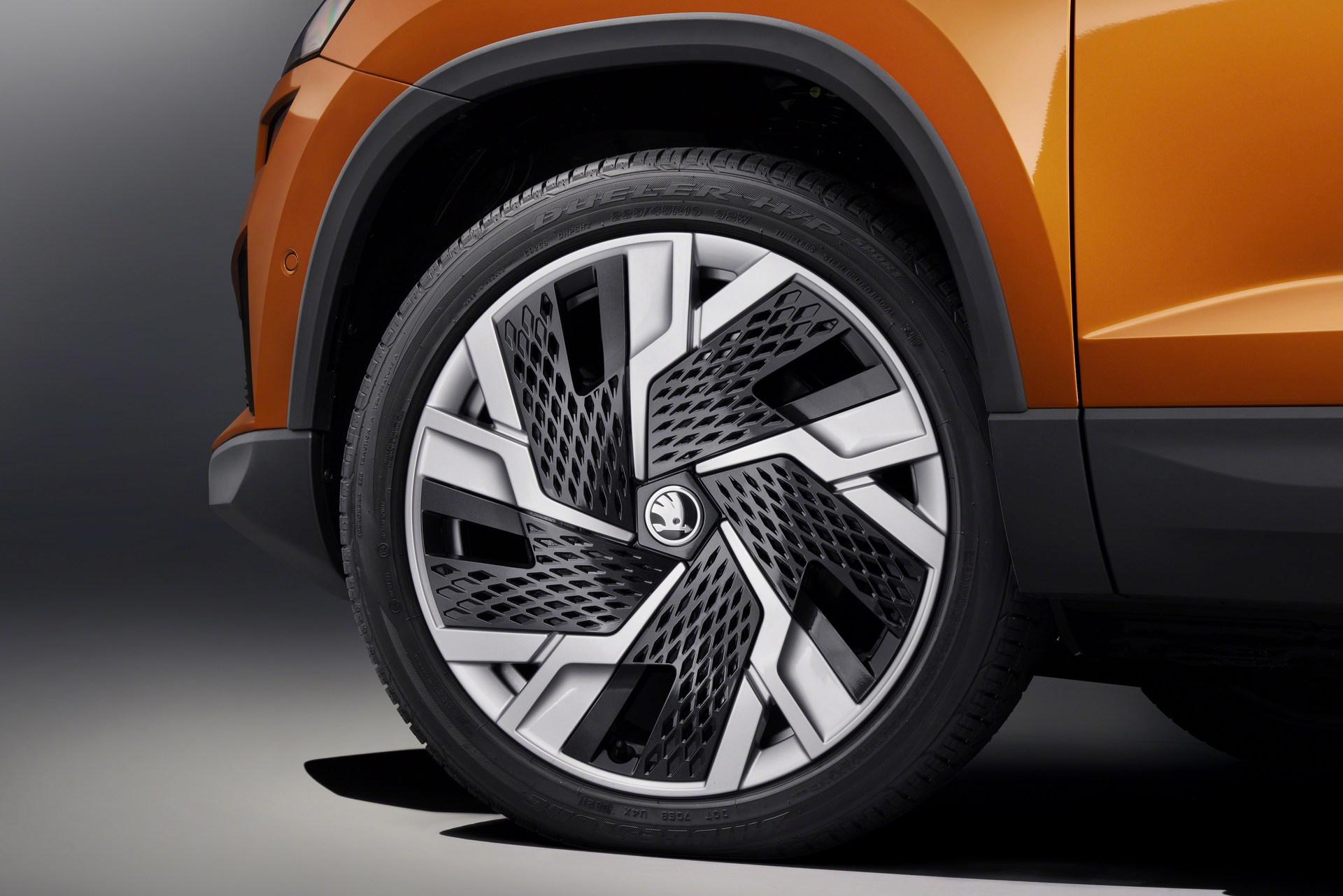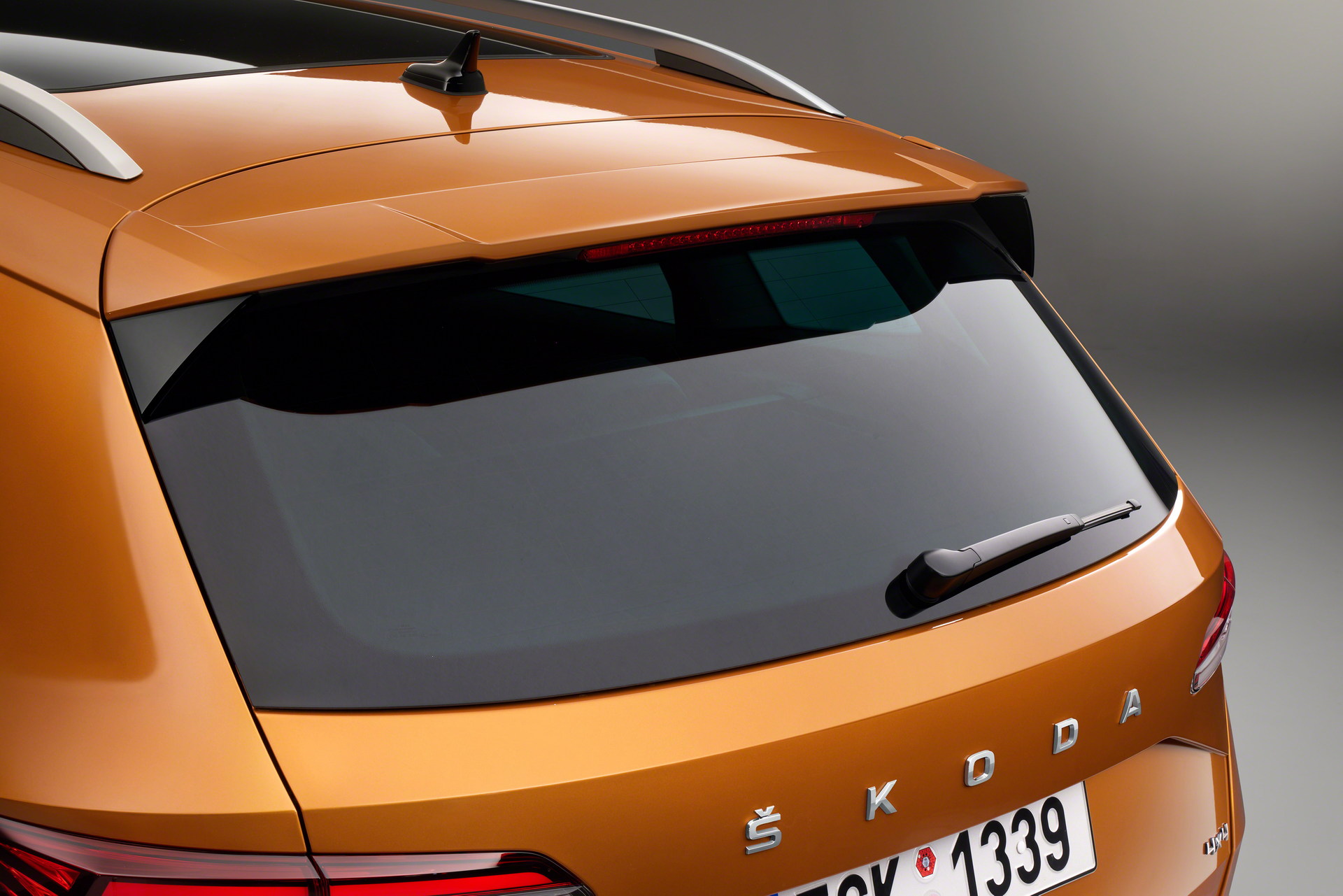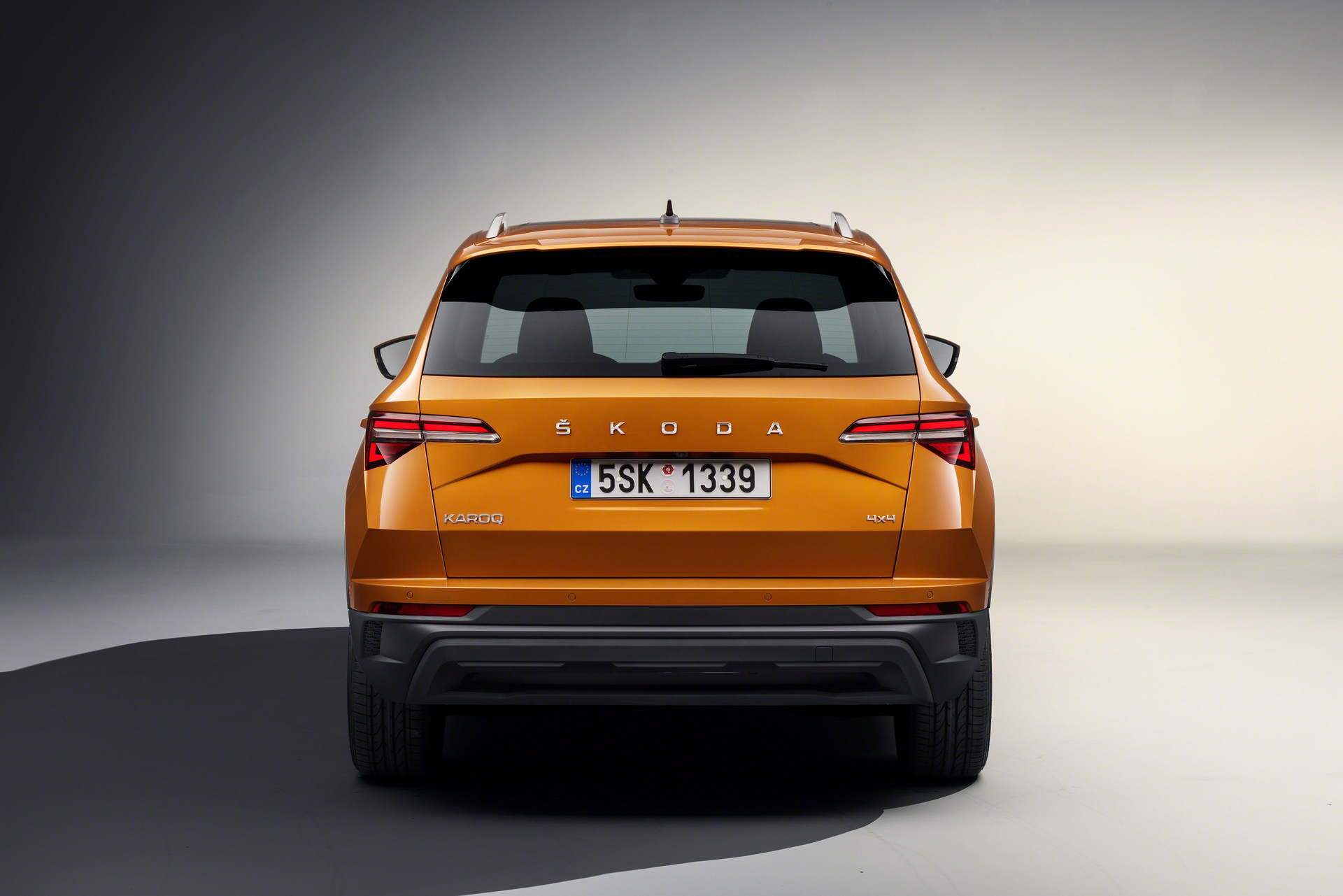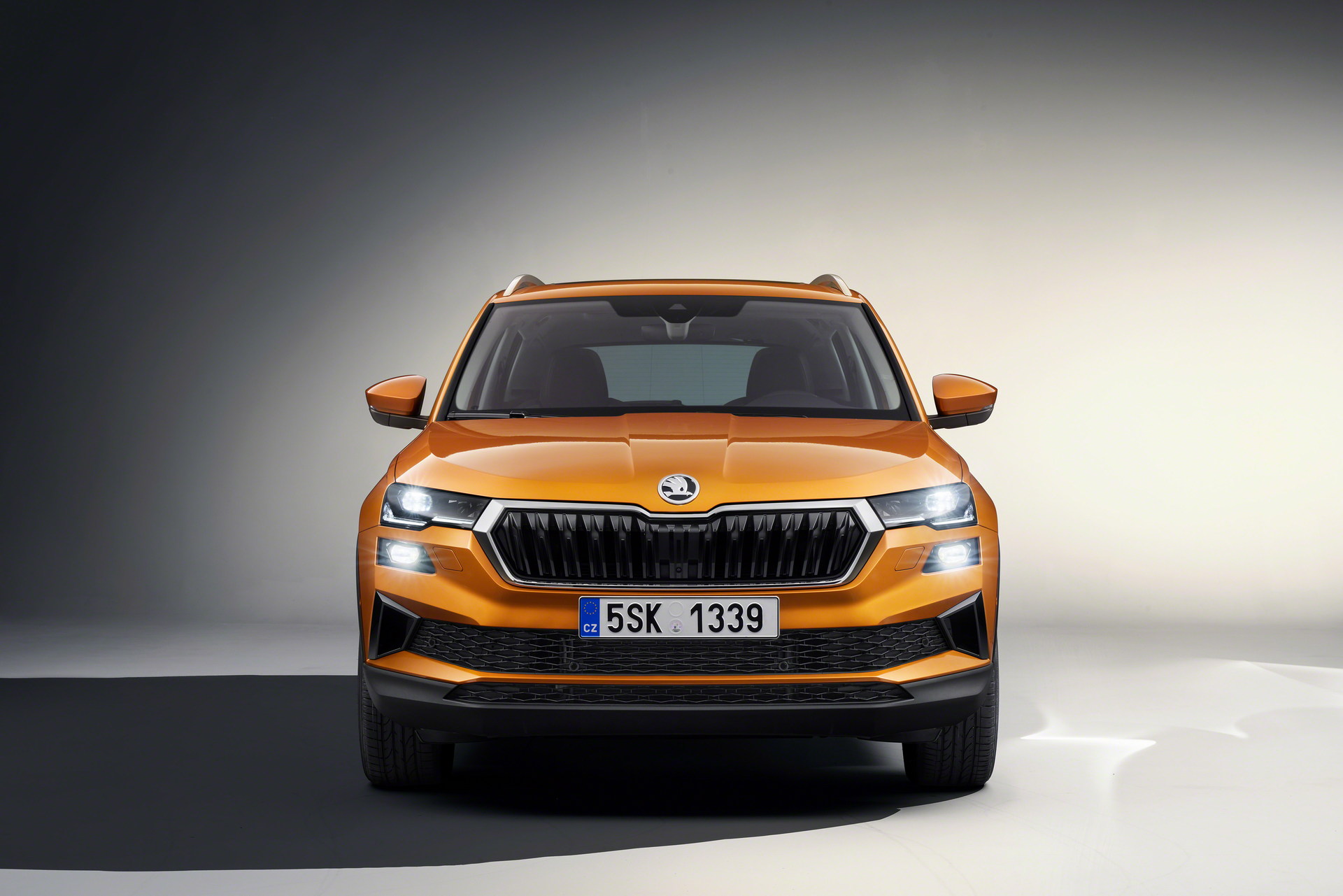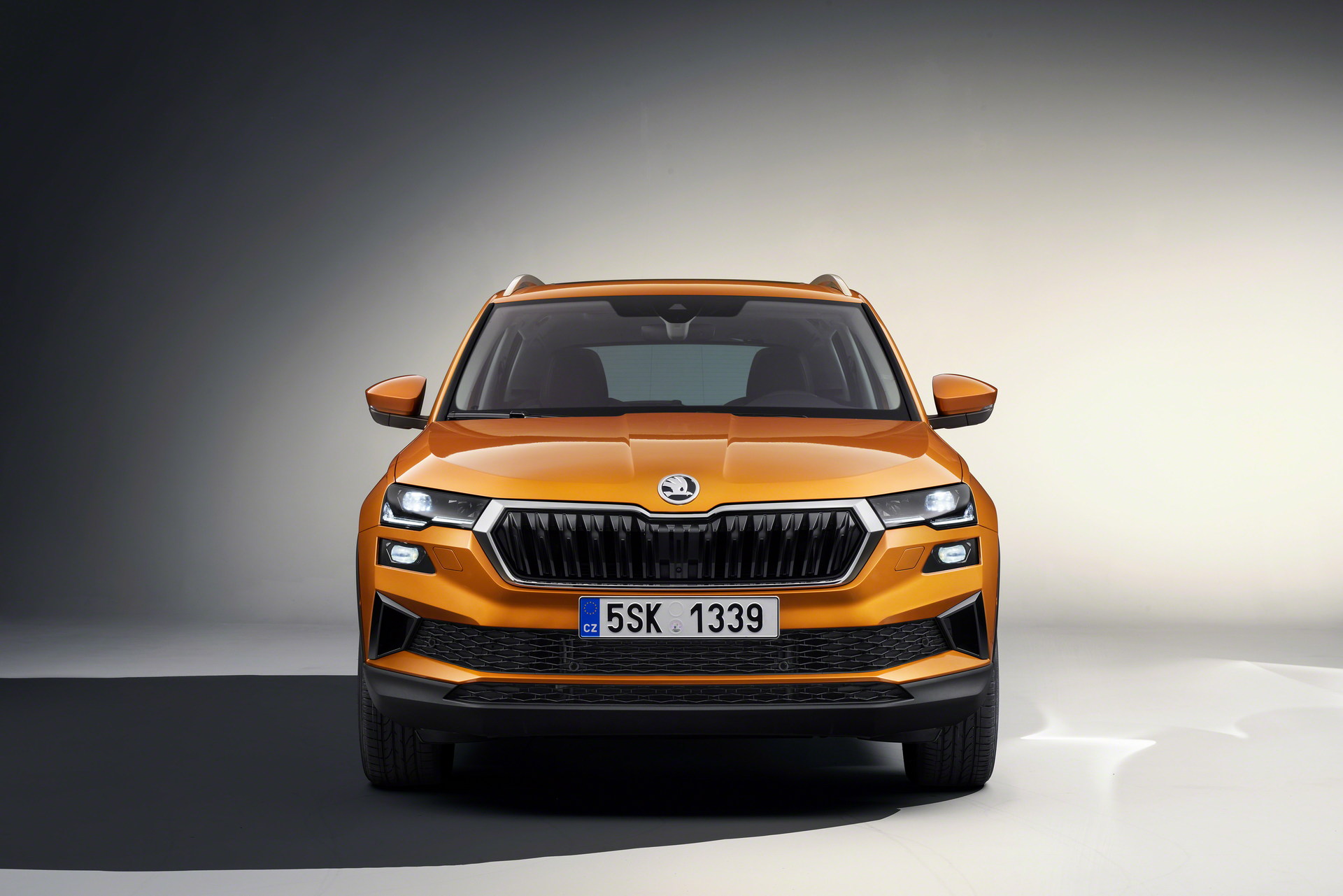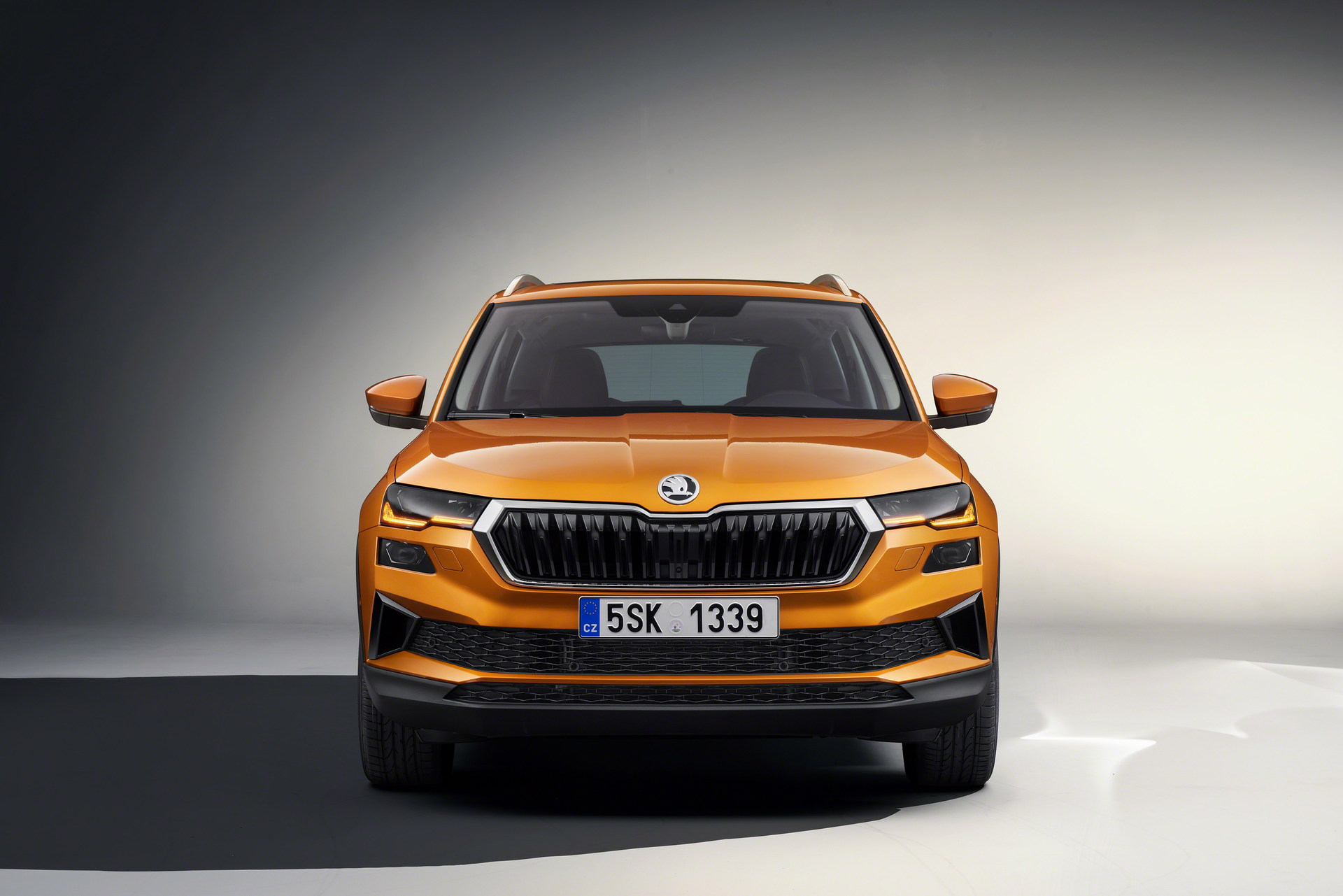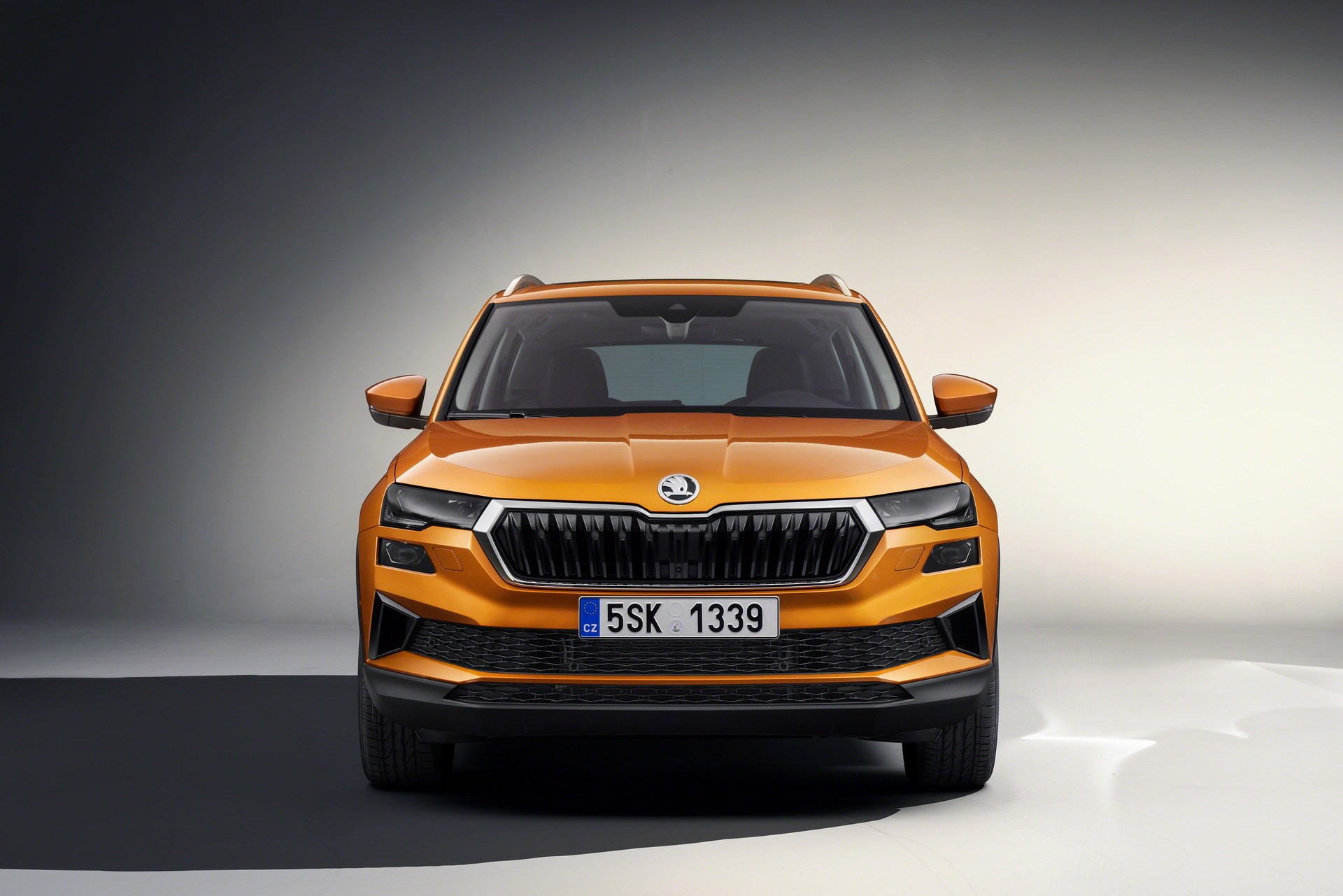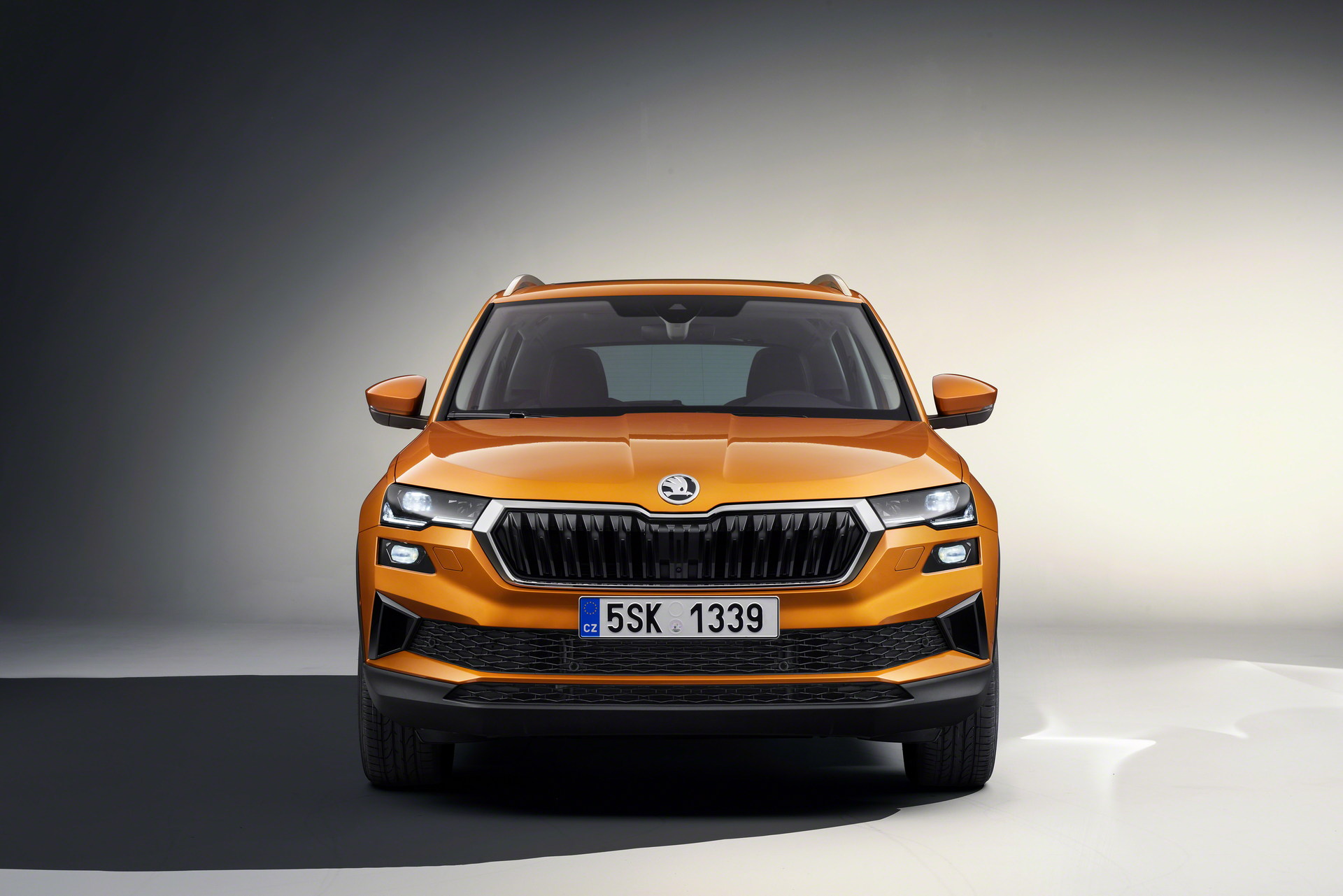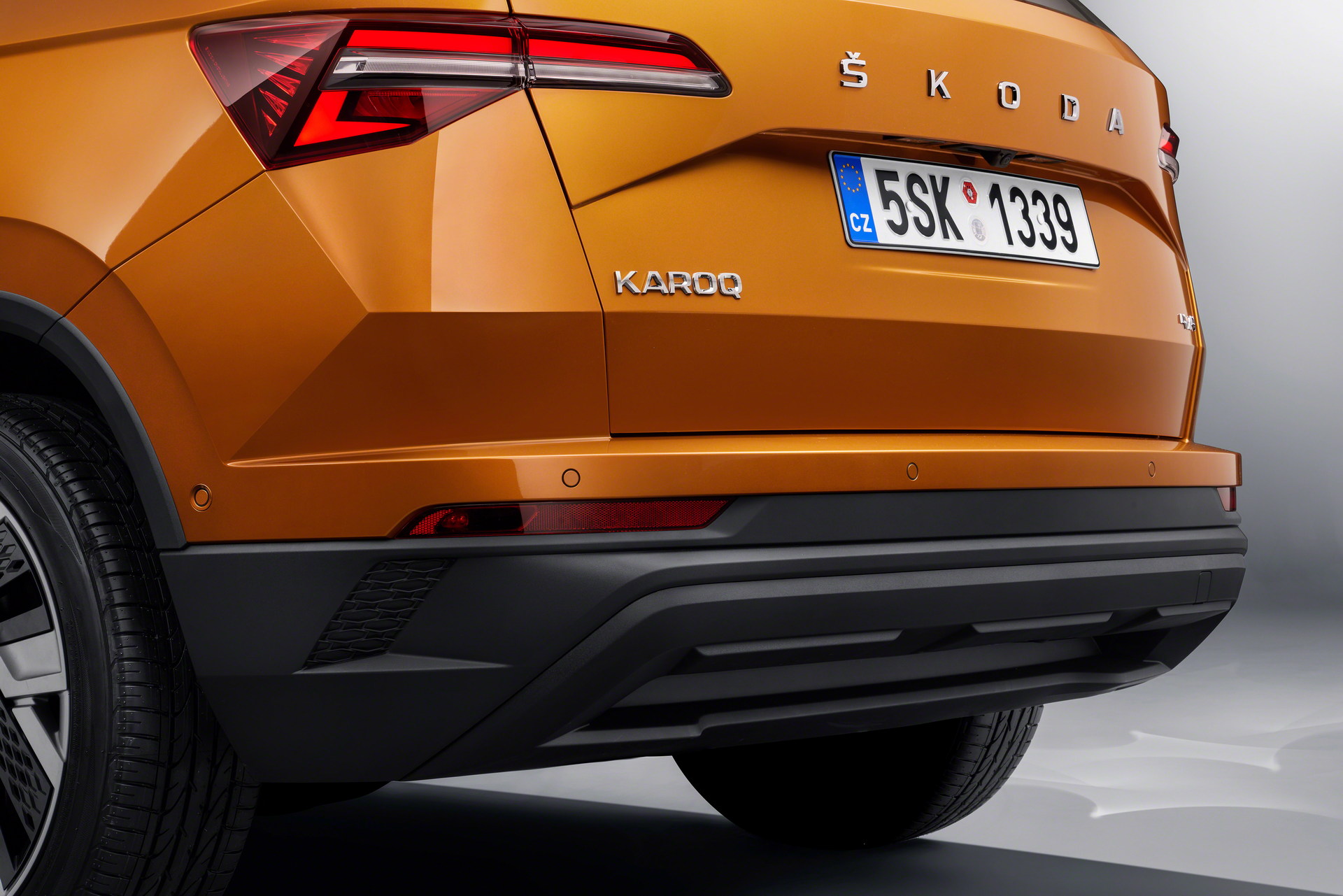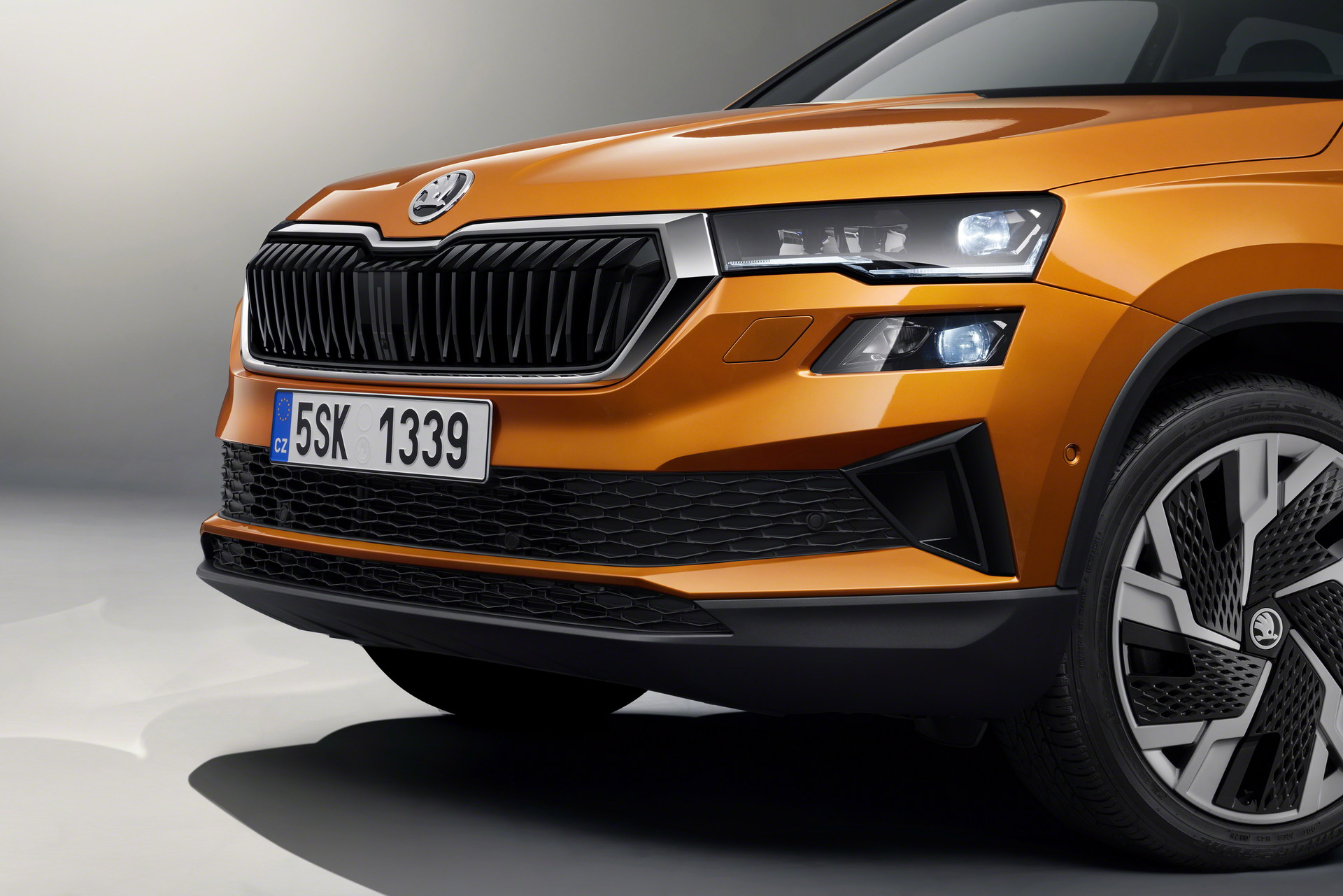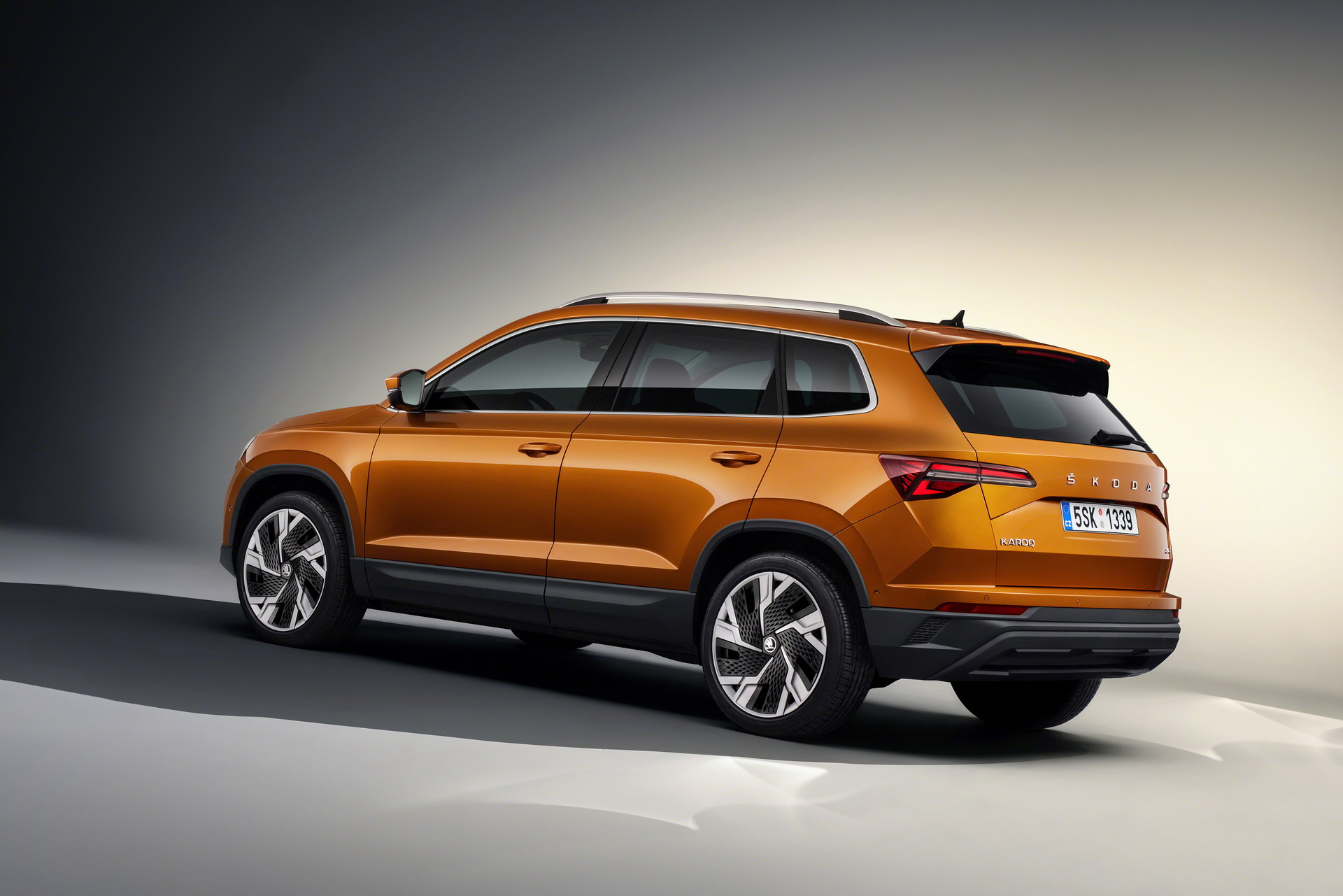After a teaser campaign, Skoda has officially unveiled the updated Karoq which gets a mid-life facelift to keep it competitive in the C-SUV segment four years and half a million sales after its original debut. Following the larger Kodiaq, the Karoq is enhanced with mild visual updates, more efficient engines as well as extra tech, safety, and comfort features inside the cabin.
Design-wise, the Karoq is instantly recognizable with Skoda designers taking an evolutionary approach. At the front, the redesigned double headlights are slimmer and incorporate full-LED Matrix technology. Other changes include the new bumper with a wide lower intake, air curtains, and the new hexagonal grille that is a common feature in the entire Skoda range.
Read Also: 2022 Skoda Slavia Breaks Cover As A Budget Sedan For India
The profile looks identical besides the brand new alloy wheel designs with a diameter of 17, 18, or 19-inches. Features like the black plastic aero trim on certain alloy wheels in combination with the front air curtains, underbody, rear spoiler, and the finlets on the rear windscreen contribute to improved aerodynamics (0.30 cd). At the back, we also find slimmer LED taillights and a more angular approach on the surfacing of the rear bumper.
The Skoda Karoq SportLine trim level is visually differentiated by the body-colored aprons, gloss black accents, tinted windows, and standard 18-inch wheels (optional 19-inch).
The C-SUV is measuring 4,390 mm (172.8 inches) long which makes it +8 mm (0.3 inches) longer than its predecessor. The wheelbase is 2,638 mm (103.9 inches) for the FWD variants and 2,630 mm (103.5 inches) for the AWD.
Inside, the updated Karoq comes standard with an 8-inch digital instrument cluster, while a larger 10.25-inch unit is optional. This is combined with four updated infotainment systems featuring touchscreens of up to 9.2-inches depending on the trim level. Applications including news, weather forecast, and calendar are included in VW Group’s third-generation modular infotainment systems Amundsen and Columbus, which are integrating an eSIM allowing over-the-air map and software updates. The systems support Android Auto and Apple CarPlay connectivity while owners can remotely access the vehicle through the MyŠKODA app.
In terms of safety, the facelifted Karoq is equipped with up to nine airbags and an array of ADAS including Park Assist, Trailer Assist, Crew Protect Assist, Area View, and the optional Travel Assist incorporating five to eight systems.
Besides the extra tech, Skoda has added new decorative strips on the instrument panel and door trims, enhanced LED ambient lighting, optional electrically operated front seats with memory function, and a new Eco pack with upholstery made from vegan, sustainable materials. Fittingly, the SportLine trim gets piano black design features, carbon-fiber-style accents, a black headliner, and sports seats with ThermoFlux upholstery.
The standard cargo space is 521 lt (18.3 cubic feet) and can reach up to 1,630 lt (57.6 cubic feet) with the rear seats folded. However, with the optional VarioFlex seats the boot is 588 lt (20.8 cubic feet) in standard five-seat layout and reaches 1,810 lt (63.9) with the rear seats completely removed.
Read Also: Skoda Is Considering An Even Smaller SUV For Emerging Markets
The Karoq inherits the more efficient EVO generation of petrol and diesel engines that are already used in many cars from the VW Group’s portfolio.
Petrol options include the 1.0 TSI three-cylinder producing 108 hp (81 kW / 110 PS) that is exclusively combined with a six-speed manual gearbox, the 1.5 TSI four-cylinder producing 148 hp (110 kW / 150 PS) with either a six-speed manual or a seven-speed DSG, and the flagship 2.0 TSI four-cylinder producing 187 hp (140 kW / 190 PS) that is only available with the seven-speed DSG. The most powerful of the bunch is reserved for the Karoq SportLine trim and comes exclusively combined with all-wheel drive.
Finally, there is also the 2.0 TDI four-cylinder diesel producing either 114 hp (85 kW / 116 PS) or 148 hp (110 kW / 150 PS) in combination with a manual or a DSG gearbox, and optional all-wheel-drive on its most powerful guise.
Like its predecessor, the updated Karoq will be produced in the Czech Republic, Slovakia, Russia, and China, and will be available in 60 countries. Competitor models include the likes of the Nissan Qashqai, Hyundai Tucson, Peugeot 3008, Ford Kuga, as well as the mechanically-related SEAT Ateca and VW T-Roc that have been recently facelifted.




